Baby Care & Parenting Blogs
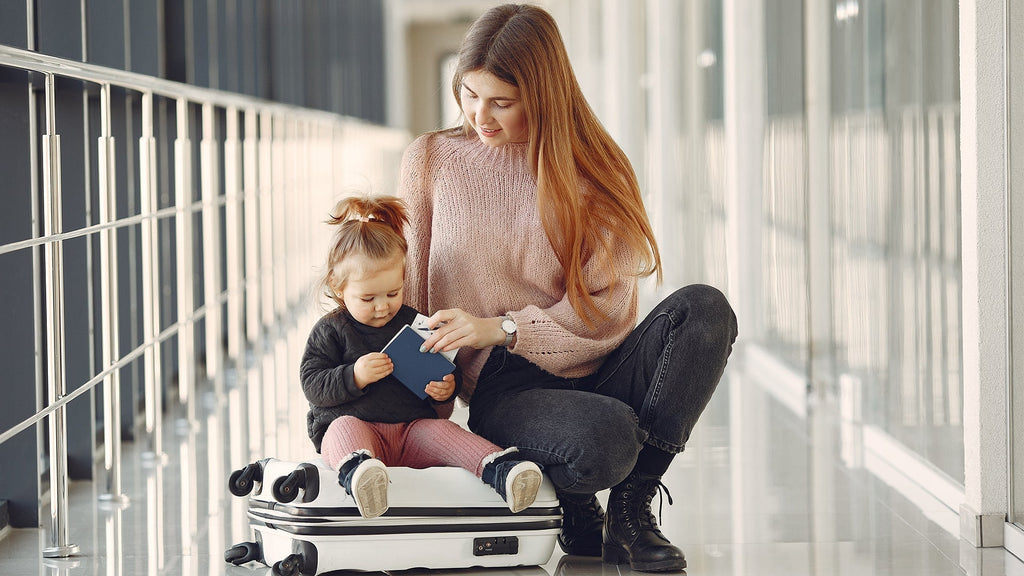
Top 10 Things to Know When Flying with a Baby
Flying with a baby can be a daunting experience, especially for first-time parents. However, you can make the trip easier and more enjoyable for you and your child if you prepare and follow these helpful guidelines. Here are the top 10 things to know when flying with a baby.
Top 10 Things to Know When Flying with a Baby
Flying with a baby can be a stressful experience, especially for new parents. With the right preparation and mindset, however, it can be smooth and even enjoyable. Below are the top ten things to keep in mind to make your journey easier.

1. Plan Ahead
Planning is crucial when flying with a baby. Book your tickets early to ensure you get the best seats for your family. If possible, choose flights that align with your baby’s nap schedule. This can help make the flight more manageable. Also, inform the airline if you need a bassinet or any other special accommodations.
2. Pack Smart
Less is more when it comes to packing, but you still need to ensure you have all the essentials. Here’s a checklist to help you pack smartly:
- Diapers: Pack enough diapers for the flight duration, plus a few extras.
- Baby Wipes: Essential for diaper changes and cleaning up spills.
- Clothing: Pack extra clothes for your baby like a baby bodysuit and a change of clothes for yourself.
- Blanket: A soft blanket can be useful for warmth and comfort.
- Feeding Supplies: Whether you’re breastfeeding, bottle-feeding, or have started solids, pack enough food and baby feeding bottles for the trip.
3. Arrive Early
Arriving at the airport early gives you ample time to handle unexpected situations. With a baby in tow, you’ll need extra check-in, security checks, and boarding time. Arriving early helps reduce stress and gives you time to deal with last-minute issues.
4. Choose the Right Seats
Selecting the right seats can make a significant difference in your travel experience. If possible, opt for bulkhead seats as they offer more legroom. Some airlines provide bassinets for babies in these seats, which can be a lifesaver on long flights. If bulkhead seats are unavailable, consider booking a window seat so you can have more privacy.
5. Keep Your Baby Comfortable
Comfort is key when flying with a baby. Dress your baby in comfortable, layered clothing to easily adjust to changing temperatures. A familiar blanket or toy can provide comfort and security. During takeoff and landing, feed your baby or offer a pacifier to help with ear pressure changes.
6. Manage Feeding and Hydration
Keeping your baby well-fed and hydrated is crucial. If you’re breastfeeding, take advantage of feeding during takeoff and landing to help with ear pressure. If you’re bottle-feeding, pack extra formula or milk. Don’t forget to bring snacks if your baby is old enough for solids. It’s also important to keep yourself hydrated, especially if you’re breastfeeding.
7. Navigating Security
Navigating airport security with a baby requires a bit of patience. You’ll need to carry your baby through the metal detector, so it’s helpful to use a baby carrier instead of a stroller. Liquids such as breast milk, formula, and baby food are allowed in reasonable quantities but will need to be screened separately. Be prepared for additional security checks for these items.
8. Handling Layovers
Layovers can be challenging with a baby, but with a little planning, they can be manageable. Choose airports that offer family-friendly amenities such as nursing rooms and play areas. Use layover time to feed, change diapers, and let your baby stretch. If the layover is long, find a quiet corner where your baby can nap.
9. Entertainment and Distraction
Keeping your baby entertained during the flight is essential to avoid fussiness. Pack a few of your baby’s favorite toys and introduce a new toy to capture their interest. Singing songs, reading books, and playing simple games can also help distract your baby. For older babies, a tablet with pre-downloaded baby-friendly videos or apps can be a great source of entertainment.
10. Stay Calm and Flexible
Traveling with a baby can be unpredictable, and things might not always go as planned. Staying calm and flexible is crucial. Babies can pick up on your stress, so try to stay relaxed. If your baby cries or becomes fussy, remember that it’s normal and other passengers are usually understanding. Focus on comforting your baby, and don’t be afraid to ask the flight attendants for assistance if needed.
Additional Tips
-
Travel Documents
Ensure you have all necessary travel documents for your baby, including a passport, if traveling internationally. -
Health Check
Consult your pediatrician before flying, especially if your baby has any health issues or if it’s your first time flying with them. -
Sanitization
Airplanes can be germ hotspots. Bring hand sanitizer and disinfectant wipes to clean surfaces around your seat. -
Car Seat
If you’ve purchased a seat for your baby, consider bringing an FAA-approved car seat for added safety and comfort. -
Boarding Last
Some airlines allow families with young children to board early. However, boarding last can be beneficial to minimize the time your baby spends on the plane.
Flying with a baby can be challenging, but with careful planning and a positive mindset, it can also be a rewarding experience. Remember, the key to a successful flight is preparation, patience, and staying flexible. Safe travels!
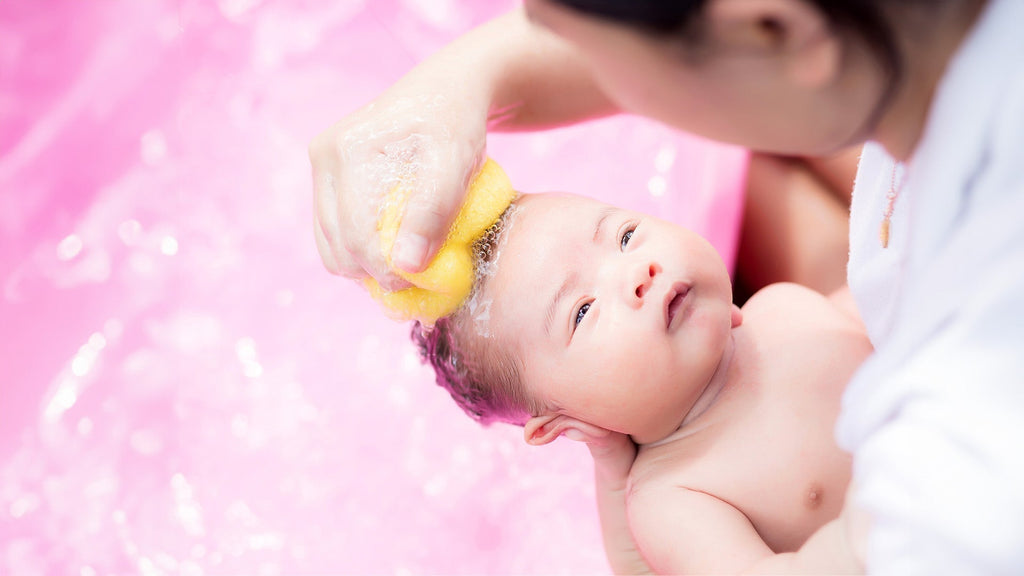
A Comprehensive Guide to Wash Your Baby’s Hair
Washing your baby’s hair might seem daunting, especially for new parents. However, with the right techniques and products, it can be a gentle and enjoyable experience for you and your baby. This guide will provide detailed steps on how to properly wash your baby’s hair, ensuring their scalp remains healthy, and their hair stays soft and clean.
Why Washing Your Baby’s Hair is Important
Regularly washing your baby’s hair is essential for several reasons:
-
Hygiene
It helps to remove dirt, sweat, and excess oils that can accumulate on the scalp. -
Comfort
A clean scalp reduces the likelihood of itchiness and discomfort. -
Health
Proper washing can prevent conditions like cradle cap, a common infant scalp issue.
How Often Should You Wash Your Baby’s Hair?
The frequency of washing your baby’s hair depends on their age and hair type:
-
Newborns
For newborns, washing their hair once or twice a week is sufficient since they don’t produce much oil. -
Older Babies and Toddlers
As your baby grows and becomes more active, you might need to wash their hair 2-3 times a week or as needed.
Choosing the Right Baby Shampoo
Selecting the right shampoo is crucial for maintaining your baby’s hair and scalp health. Here’s what to consider:
-
Gentle Formula
Opt for baby shampoos that are specifically formulated for babies. These are usually tear-free and mild, avoiding harsh chemicals that can irritate the scalp. -
Organic Baby Shampoo
Organic baby shampoos are an excellent choice as they are free from synthetic fragrances, dyes, and harmful chemicals. They often contain natural ingredients like aloe vera, coconut oil, and neem extract, which are soothing and nourishing for your baby’s delicate scalp.
Why Choose Organic Baby Shampoo?
-
Safe Ingredients
Organic baby shampoos are made from natural, safe ingredients less likely to cause allergic reactions or skin irritation. -
Eco-Friendly
These products are produced using environmentally friendly practices and are biodegradable, reducing their environmental impact. -
Nourishing
Natural organic shampoo ingredients can nourish your baby’s hair and scalp, promoting healthy growth.
Preparing for the Hair Wash
Before you start washing your baby’s hair, gather all necessary supplies to ensure a smooth process:
-
Baby Shampoo
Choose a gentle or organic baby shampoo. -
Soft Washcloth or Sponge
For gentle cleansing. -
Cup or Rinse Bottle
For pouring water over your baby’s head. -
Towel
A soft, absorbent towel for drying your baby’s hair.
Steps to Properly Wash Your Baby’s Hair
1. Create a Calm Environment:
Choose a warm, comfortable room for the bath. Make sure you have everything within arm’s reach to avoid leaving your baby unattended.
2. Support Your Baby’s Head:
Gently cradle your baby’s head with one hand while supporting their body with the other. You can either hold them in your arms or lay them on a padded surface like a bath cushion or a sink insert.
3. Wet Your Baby’s Hair:
Using a cup or rinse bottle, gently pour warm water over your baby’s head. Ensure the water is at a comfortable temperature (around 37-38°C or 98-100°F).
4. Apply Shampoo:
Squeeze a small amount of baby shampoo onto your hand and gently massage it into your baby’s scalp using your fingertips. Be gentle to avoid causing any discomfort. Focus on the scalp rather than the hair itself, as the scalp is where oils and dirt accumulate.
5. Rinse Thoroughly:
Rinse your baby’s hair thoroughly with warm water, ensuring all the shampoo is washed away. Residual shampoo can cause irritation or dryness.
6. Dry Gently:
Wrap your baby in a soft, absorbent towel and gently pat their hair dry. Avoid rubbing, as this can damage their delicate hair and scalp.
Tips for a Stress-Free Hair Washing Experience
Make It Fun:
Turn hair washing into a fun activity by singing songs, talking to your baby, or using bath toys to distract them.
Be Consistent:
Establish a routine so your baby knows what to expect. Consistency can make the process smoother and less stressful over time.
Be Patient:
Your baby might not enjoy hair washing at first, but with patience and gentle handling, they will gradually get used to it.
Use Minimal Products:
Babies have sensitive skin, so it’s best to use minimal products. Stick to a gentle shampoo and avoid using conditioner or other hair products unless necessary.
Handling Common Challenges
Cradle Cap
If your baby has a cradle cap (a common condition characterized by flaky, crusty patches on the scalp), you can gently massage a bit of baby oil onto the scalp before shampooing. This helps to loosen the flakes. Use a soft brush to gently remove the flakes during shampooing.
For more information on cradle cap, you can read this detailed guide - Dealing with Cradle Cap: Causes, Treatment Options, and Proactive Prevention
Fear of Water
Some babies are afraid of water being poured over their heads. To minimize discomfort, pour water slowly and shield their eyes with your hand. Using a rinse bottle with a spout can help direct the water flow more precisely.
Sensitive Scalp
If your baby has a particularly sensitive scalp, consult your pediatrician before using any new products. They might recommend a specific shampoo or provide additional care tips.
Properly washing your baby’s hair is an important part of their hygiene routine. By choosing the right products, such as organic baby shampoo, and following gentle techniques, you can ensure that hair washing is a comfortable and enjoyable experience for both you and your baby. Remember, patience and consistency are key to making hair washing a smooth part of your baby’s bath time. With these tips, you can keep your baby’s hair clean, healthy, and happy.

6 Baby Rituals That Every Parent Should Know
Rituals and development are deeply intertwined in the life of a child. Every culture has traditions that are considered vital for a child's growth and well-being. These rituals have been integral to cultural practices for centuries. In today's interconnected world, where the internet has blurred cultural boundaries, it's easier than ever to explore and embrace practices from different traditions. For example, Hindu rituals for newborn babies are known for their profound impact on a child's development and well-being. Here are five significant sanskaras from Hinduism that ensure a baby's healthy and holistic growth.

Jatakarma (Birth Ritual)
Remember your mother or grandma telling you that when you were born, your dad made you taste honey or ghee on the very first day of your life? The tradition is called Jatakarma! This is the first ritual for a newborn baby to celebrate the birth of the baby. After the mother, it is the father through whom a baby knows the world. A father chants the name of gods or mantras in a baby's ears, promoting positive vibes. The ritual is completed by touching honey or ghee to the baby's lips. Hence, this signifies the bond between a father and a baby.

Naamakaran (Name Giving)
Naamkaran is one of the most significant Hindu rituals for a newborn baby. For the naming ceremony, parents perform a Hawan to promote positive and healthy vibes. On the auspicious day of Naamkaran, the child dresses in new baby clothes, and the religious leader prepares a horoscope. This tradition is vital for a child's identity because official announcements about the name are made to friends and family. The decided name is also whispered in the child's ear by the father in a few cultures.
Similar to Naamkaran in Hindu tradition, other communities have their own beautiful ways of announcing a baby’s name. For instance, in some Muslim households, a ceremony called Daston is held, where the newborn's name is formally introduced to loved ones, often accompanied by prayers and blessings.

Nishkrmana (The First Outing)
Approximately in the fourth month, parents take their little ones out of the home for the first time(Nishkrmana). Five components of nature, like earth, water, air, fire, and space, are introduced to the child. The moon and the sun are also shown and worshipped for the positive growth of the baby. This also indicates that the sense and motor organs of the baby are now strong enough to tolerate the sun's energy. This tradition also demonstrates to parents that a child is never confined to the boundaries and limits of the house.

Annaprashan (The First Solid Food)
Annaprashan is a cherished Hindu ritual that marks the introduction of solid food to a newborn baby, typically occurring when the baby is around six months old. This tradition marks the establishment of an adult diet for a baby for the rest of their life. It is essential for physical and mental development as the teething process starts now. Children learn about new feeding methods that involve them individually. Popularly, rice grain is fed to the child through kheer annaprashan is followed in different cultures with different names. Hence, the food varies accordingly.

Chaul ( Shaving of The Head)
Chaul, also known as Mundan, is a significant Hindu ritual where a newborn baby's head is shaved for the first time. The act of shaving the head is believed to cleanse the child of past life's negativity, symbolizing a fresh start and the removal of impurities. But scientifically, it helps absorb vitamin D from sunlight and keeps the baby's head cool in the summer. It also stimulates the proper growth of nerves and the brain. This ceremony is also significant for the baby's cradle cap as it gets removed over time, and the new, healthier hair growth gets promoted.
Karnavedha (Ear Piercing)
Karnavedha is a traditional Hindu ceremony where a baby’s ears are gently pierced. It is usually done when the child is very young and is believed to be good for health and spiritual well-being. On this day, the baby wears new clothes, and prayers are said by a priest while the ear piercing is done. Family members come together to bless the child and take part in the ceremony. Just like this Hindu tradition, many other communities also have their own ways of doing ear piercing with love and celebration.

Significance Of Hindu Rituals for Newborn Babies
Hindu rituals hold great importance in the lives of believers, serving as a way to connect with the divine and maintain a sense of spiritual discipline. These rituals, whether they involve daily prayers, festivals, or special ceremonies, help individuals express their devotion and gratitude to the gods and goddesses. They also play a vital role in preserving cultural heritage and passing down traditions, values, and stories from one generation to the next. Through these rituals, Hindus find a deeper meaning in their daily lives, feel a sense of community, and gain peace and purpose.
Scientific Facts Behind Hindu Rituals
Many Hindu rituals for newborns have scientific underpinnings that support a child's development. For instance, shaving a baby's head (Mundan) promotes hair growth and scalp hygiene. Introducing solid foods around six months (Annaprashan) aligns with pediatric guidelines, aiding in nutritional balance and palate development. Ear piercing (Karnavedha) is believed to stimulate acupressure points beneficial for vision and brain health, while also being less painful and healing faster in young children.
Exposing a newborn to morning sunlight provides essential Vitamin D for bone health. Regular oil massages (Abhyanga) improve blood circulation, promote better sleep, and support neurological development. These practices blend cultural wisdom with scientific benefits, ensuring holistic growth for the child.
These practices are devoted from generation to generation. At the same time, the ways of doing them have been modernized over time. The five essential sanskaras impact a child scientifically and boost healthier development. Every parent may follow these customs, whether in the form of sanskaras or just as a habit. These can be followed by anyone, as they require the bare minimum but play a significant role in a baby's upbringing in the initial year.
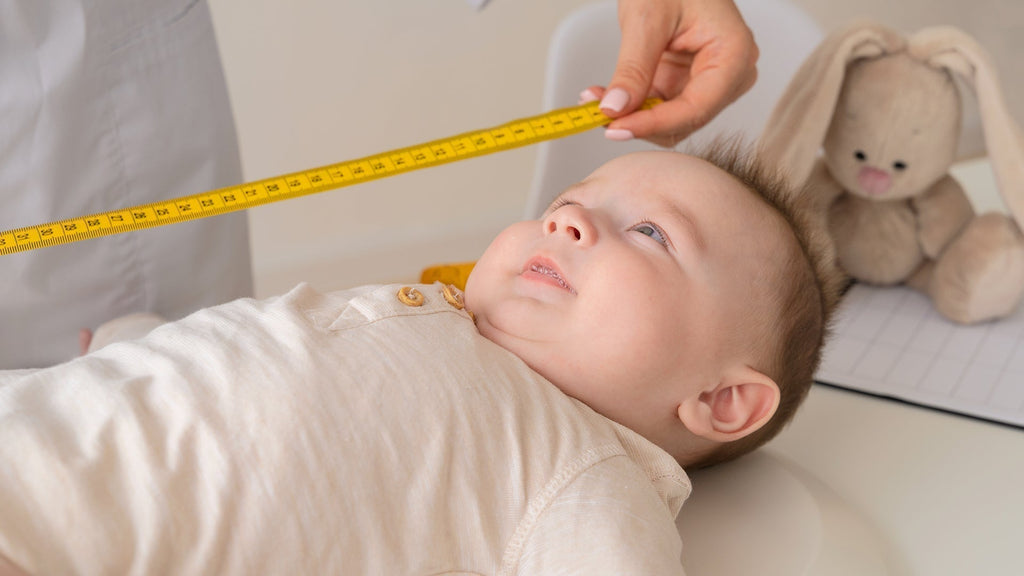
Importance of Baby Growth Chart for a Parent
Parenthood is a journey filled with joys, challenges, and countless milestones. Monitoring your baby's growth and development is crucial to ensuring their health and well-being. This is where a baby growth chart comes into play. A baby growth chart is vital for parents and healthcare providers to track a child's physical development over time. It helps understand whether your baby is growing at a healthy rate compared to established norms.
What is a Baby Growth Chart?
A baby growth chart visually represents your child's growth patterns over a period. It includes weight, height (or length), and head circumference measurements. These charts are created based on data from a large population of children and provide percentiles that indicate how your baby's measurements compare to others of the same age and sex.

Why is a Baby Growth Chart Important?
-
Tracking Developmental Milestones
A baby growth chart allows parents and healthcare providers to track important developmental milestones. By comparing your baby's growth to standard growth patterns, you can ensure they are developing healthily. -
Early Detection of Health Issues
Deviations from typical growth patterns can be an early indicator of health problems. For instance, if your baby's weight gain slows significantly, it might signal nutritional issues or underlying medical conditions requiring attention. -
Personalized Care
Growth charts help in providing personalized care. By closely monitoring your baby's growth chart, healthcare providers can offer tailored advice on nutrition, physical activity, and overall health care.
Understanding the Baby Growth Chart During Pregnancy
While most parents are familiar with tracking their baby's growth post-birth, the pregnancy baby growth chart is equally important. During pregnancy, regular ultrasounds and check-ups provide data on the fetus's growth, helping to ensure that the baby is developing properly inside the womb. This pregnancy baby growth chart includes measurements like fetal length and weight compared to standard fetal growth patterns.
How to Use a Baby Growth Chart
-
Regular Check-ups
It's important to take your baby for regular pediatric check-ups, where the doctor will measure and plot your baby's growth. This helps maintain an accurate baby growth chart. -
Understand the Percentiles
Growth charts use percentiles to compare your baby's growth to other children's. For example, if your baby boy's weight is in the 50th percentile, it means he is heavier than 50% of boys his age and lighter than the other 50%. The baby boy and girl growth charts will have different percentiles based on sex-specific growth data. -
Consistent Monitoring
Consistent monitoring helps identify deviations from the expected growth patterns early. Keeping track of your baby's measurements at home between doctor visits can be helpful.
Interpreting the Growth Chart of Your Baby
Interpreting your baby's growth chart involves understanding where your baby falls on the chart. It's essential to recognize that each baby grows at their own pace. Some might be naturally smaller or larger than others. What matters most is that your baby consistently grows over time.
-
Weight:
Monitoring your baby's weight is crucial as it reflects their overall health and nutrition. Regular updates on the baby growth chart will show if your baby is gaining weight at a healthy rate. -
Height/Length
Tracking your baby's height or length helps in assessing their skeletal growth. The growth chart will indicate if your baby is growing taller than expected. -
Head Circumference:
Measuring head circumference is essential for monitoring brain development. This measurement on the baby growth chart can help detect any potential issues with brain growth or skull development.
Gender-Specific Growth Charts
There are differences in growth patterns between boys and girls, which is why there are separate baby boy growth charts and baby girl growth charts. These charts account for the average growth differences and help in making more accurate assessments.
For example, a baby boy growth chart might show that boys typically have a slightly higher weight and height compared to girls at certain ages. Conversely, a baby girl growth chart will reflect the average growth patterns specific to girls. Using the correct chart ensures that you are comparing your baby's growth to the appropriate standards.
The Role of Nutrition
Nutrition plays a critical role in your baby's growth. A well-balanced diet rich in essential nutrients supports healthy growth and development. Consulting with a pediatrician to ensure your baby's diet meets their nutritional needs is crucial, especially if the baby's growth chart indicates any concerns.
Conclusion
A baby growth chart is more than just a set of numbers and percentiles. It's a vital tool for ensuring your child's healthy development and early detection of potential health issues. By regularly monitoring your baby's growth chart, you can provide the best possible care and support for the baby's growth journey.
Whether you are tracking the pregnancy baby growth chart during prenatal visits or the baby boy growth chart and baby girl growth chart after birth, understanding and using these charts effectively is key to your baby's health. Remember, every child is unique, and growth patterns can vary widely, so always consult your healthcare provider for personalized advice and guidance.
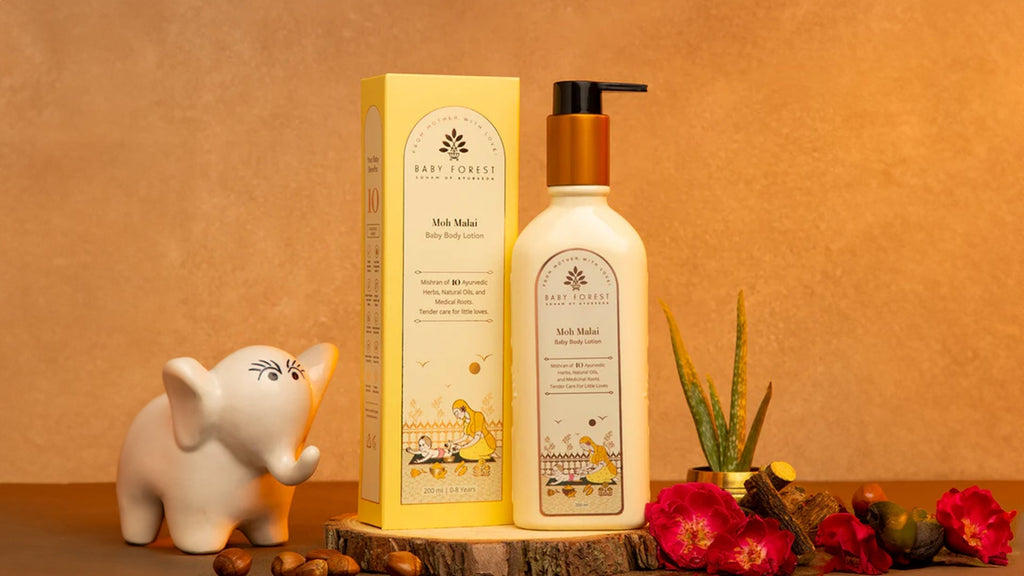
The Benefits of Using Organic Baby Lotion
When it comes to caring for your baby's delicate skin, choosing the right products is important. Organic baby lotions are increasingly popular among new parents who seek the safest and most natural options. These lotions are crafted from plant-derived ingredients, free from harsh chemicals, and are gentle on the skin, making them ideal for daily use. Here's why organic baby lotion should be a staple in your childcare routine, along with an overview of some key ingredients that offer incredible benefits.
Why Choose Organic Baby Lotion?
Organic baby body lotions are made with natural ingredients that are not only safe but also beneficial for your baby's skin. These products are typically vegan, cruelty-free, derma-safe, and devoid of synthetic fragrances and dyes, making them a wholesome choice for your little one. They are formulated to provide moisture, protect sensitive skin, and prevent common skin issues like dryness and diaper rashes.
Gentle on Sensitive Skin
Babies' skin is thinner and more absorbent than adults', making it sensitive to chemicals found in conventional lotions. Organic baby body lotions are crafted without harsh chemicals, synthetic fragrances, or dyes, common irritants that can disrupt the skin's natural balance and lead to dryness or rashes. Instead, organic lotions utilize natural ingredients that are far less likely to cause allergic reactions, ensuring a gentler approach to skincare.
Enhanced Moisturization
Organic lotions are typically formulated with natural oils and butter, such as coconut oil, almond oil, and shea butter, which are known for their deep moisturizing properties. Unlike petroleum-based ingredients commonly found in non-organic lotions, these natural moisturizers support the skin's ability to hydrate and repair itself. This is crucial in preventing dryness and maintaining the softness and elasticity of your baby's skin.
Free from Harmful Additives
One of the main benefits of using organic baby lotion is the absence of potentially harmful additives. Organic products do not contain parabens, phthalates, or sulfates, which can interfere with the body's natural hormones and cause long-term health issues. By choosing organic, parents can avoid exposing their babies to these unnecessary risks.
Eco-Friendly
Choosing organic baby lotion is not only good for your baby but also better for the environment. Organic farming of the ingredients in these lotions minimizes pollution, conserves water, reduces soil erosion, and uses less energy. Furthermore, farming techniques enhance soil fertility and reduce toxins in the environment, making organic products a more sustainable choice.
Key Ingredients to Look for and Their Benefits
-
Shea Makkhanam (Shea Butter)
Known for its rich moisturizing properties, shea butter is a superb ingredient for baby lotions. It helps to soothe dry skin and creates a barrier that locks in moisture, which is essential for keeping your baby's skin soft and hydrated. -
Tila Tailam (Sesame Oil)
This oil is highly nourishing and is known for its antibacterial properties. It's particularly effective in protecting baby skin against common pathogens, making it a great choice for preventing diaper rash. -
Narikel Tailam (Coconut Oil)
Coconut oil is celebrated for its deep moisturizing capabilities and is gentle enough for sensitive baby skin. It helps to soothe irritation, moisturize deeply, and enhance skin barrier function. -
Badam Vatadha (Almond Oil)
Rich in vitamins E and D, as well as minerals such as calcium and magnesium, almond oil not only supports skin health but also promotes heart and bone health in babies. -
Anar Dadim (Pomegranate Seed Oil)
This less common but highly beneficial oil is packed with antioxidants, which protect the skin from environmental stressors. It also helps heal, particularly soothing skin inflammations and eczema.
The Moh Malai Baby Body Lotions includes other botanical extracts like Ghrit Kumari (Aloe Vera), which provides exceptional soothing and healing properties, especially in healing minor rashes and supporting skin regeneration. Neemba (Neem Extract) is another excellent addition due to its renowned medicinal properties that help treat and prevent skin irritations.
Choosing the Right Organic Baby Lotion
When selecting an organic baby lotion, it's important to look at the ingredients list. Opt for products that are free from parabens, sulfates, phthalates, and artificial fragrances. Ensure the product is certified organic to guarantee that the ingredients used meet stringent organic standards.
Incorporating Organic Lotion into Your Baby's Skincare Routine
Using organic baby lotion can be part of your daily routine. Apply lotion after bath time to lock in moisture and any time you notice your baby's skin becoming a bit dry. Gentle massages with these lotions can not only moisturize but also provide a soothing bonding experience with your baby.
With ingredients that are as effective as they are safe, baby lotions provide peace of mind to parents and comfort to babies. Remember, the skin is the largest organ and taking care of it from the start sets the foundation for healthy skin for years to come. Choose wisely, and let the natural goodness of organic baby lotions nurture your baby's skin the way nature intended.
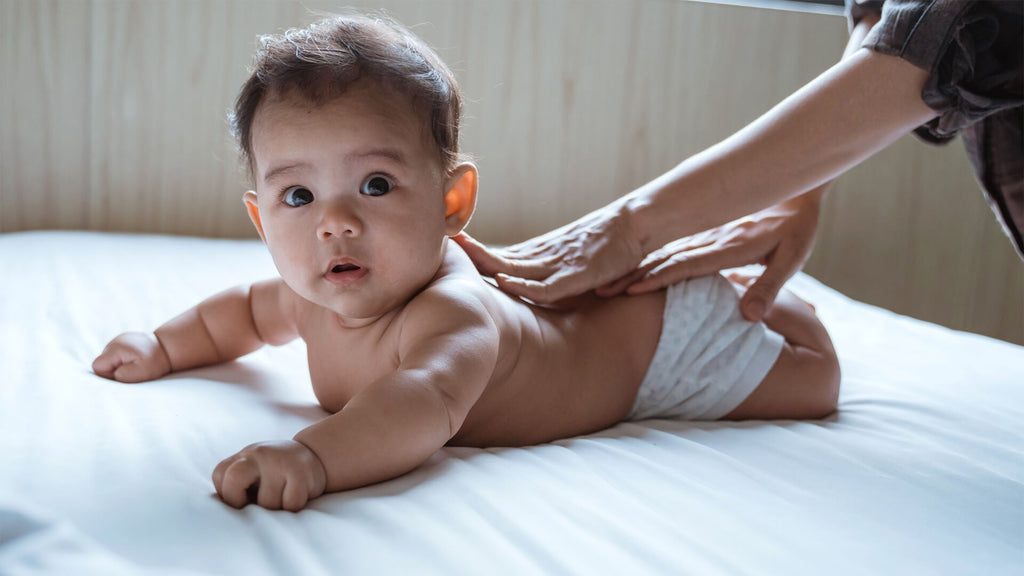
Shishu Abhyanga Guide: Benefits of Baby Oil Massage
Shishu Abhyanga or Baby Oil Massage, is an ancient Ayurvedic tradition widely practiced in India among new parents. It is well-known that regular oil massage has many benefits for a baby. Infant’s skin is delicate and sensitive; therefore, daily oil massage can promote healthy skin, provide relief from dryness, and hydrate skin to keep your baby protected. In addition to this, your baby will have increased blood circulation, strengthening the immune system and enhancing physical development. Hence, baby massage is a ritual that promotes physical, mental, and emotional well-being and can be performed daily to promote strong bonding between mother and child.
We’ve put together a baby massage guide featuring simple step-by-step instructions so that anyone can easily practice this ancient Ayurvedic tradition at home. Before starting a massage, you must take some precautions as described below:
Precautions:
- Abhyanga should be done preferably in the morning.
- Use a clean sheet while giving a massage.
- Use a slightly warm oil for giving a baby massage. Take a few drops on your palm before applying to your baby’s skin to avoid skin burn.
- Do not give a massage on a full stomach as sudden aspiration can occur. If the baby has been fed, it is best to wait for an hour before the massage.
- The pressure should be gentle to moderate.
- Massage must be done with clean hands and nails. You must trim the nails to avoid causing any harm to the baby’s skin.
- Make sure oil is not in contact with the baby’s eyes.
- Use caution when holding and massaging the baby to avoid falls and injuries.
- Babies should always be kept warm & well covered after Abhyanga.
Step By Step Process to Give Shishu Abhyanga:
Baby oil massage can be one of the best ways to bond with your baby. Not only does it help you to connect with your baby, but it also helps to relax them, making it easier for both of you to fall asleep at night. However, performing a massage can be difficult when you have never done one before. Here is a step-by-step process to give your baby a massage using baby oil in simple steps:
Step 1: Get Your Baby Ready
The first thing you must do is get your baby ready for their massage. You should make them feel comfortable and relaxed, so make sure that they are wearing something soft and comfortable, such as a t-shirt or onesie. It is also important that the room is warm enough, so check the room temperature on your thermostat to ensure that it is comfortably warm for your baby.
Step 2: Prepare the Area
You will need ample area to give Shishu Abhyanga. The bed, floor, or changing table are good options. Then place a towel on the surface and lay your baby down. The towel will prevent you from getting baby oil on the beg or table, and it will also provide a comfortable, soft surface for your little one.
Step 3: Select Oil
Always select an unscented oil that’s safe for babies, such as mineral oil, coconut oil, or olive oil. You can give a massage with Baby Forest Maasoom Maalish baby body massage oil. This oil is a mishran of 10 Ayurvedic natural essential oils of herbs, flowers, nut oils, and medicinal plants that are good for baby skin.
Pour some onto your hands and rub them together to warm it up before you start massaging your baby’s body.
Step 4: Lower Body Massage
Slowly massage heels and toes with firm, gentle strokes. Hold baby by one hand at all times. Then massage the leg from ankle to thigh and from hip to hip. Smoothly massage the leg for several minutes. It is recommended to do this on both legs simultaneously. Do not rub the genital area.
Step 5: Upper Body Area
Massage the upper back by placing both hands in the downward direction from shoulders to waist. After that, massage each arm separately. Start from the wrist up to the shoulder by making circular motions with the fingers and palms of hands. Repeat this process for another arm also.
Step 6: Back Massage
After massaging the front of your baby’s body, turn them onto their tummy and massage them from head to toe. Make sure your touch is soothing. Take a pause if you feel your baby is uncomfortable.
Step 7: Face Massage
Massage the baby’s face with your finger pads. You should begin at the middle of the forehead, down the outer side of the baby’s face, and then in toward the cheeks. Gently massage the scalp in small circular motions.
When to Perform Abhyanga Properly
Abhyanga, or Ayurvedic oil massage, can be introduced to newborns after their umbilical cord stump has healed, typically around 10-14 days old. The best time to perform Abhyanga is before a bath, ideally in the morning or early evening when the baby is calm and alert. Ensure the room is warm and draft-free to keep the baby comfortable. Abhyanga can be done daily or several times a week, depending on the baby's skin type and routine. It is essential to observe the baby's response to the massage and adjust the frequency and duration accordingly to ensure a positive and soothing experience.
Benefits of Shishu Abhyanga
Shishu Abhyanga, or infant massage, offers numerous benefits for both the baby and the caregiver. It promotes better sleep patterns and helps in the development of the baby's nervous and immune systems. Regular massage can improve blood circulation, support healthy skin, aid in digestion, and reduce colic and gas. Additionally, Shishu Abhyanga strengthens the bond between the baby and the caregiver, providing a sense of security and comfort through physical touch. The gentle massage also helps in the overall growth and development of the baby, contributing to a calm and happy demeanor.
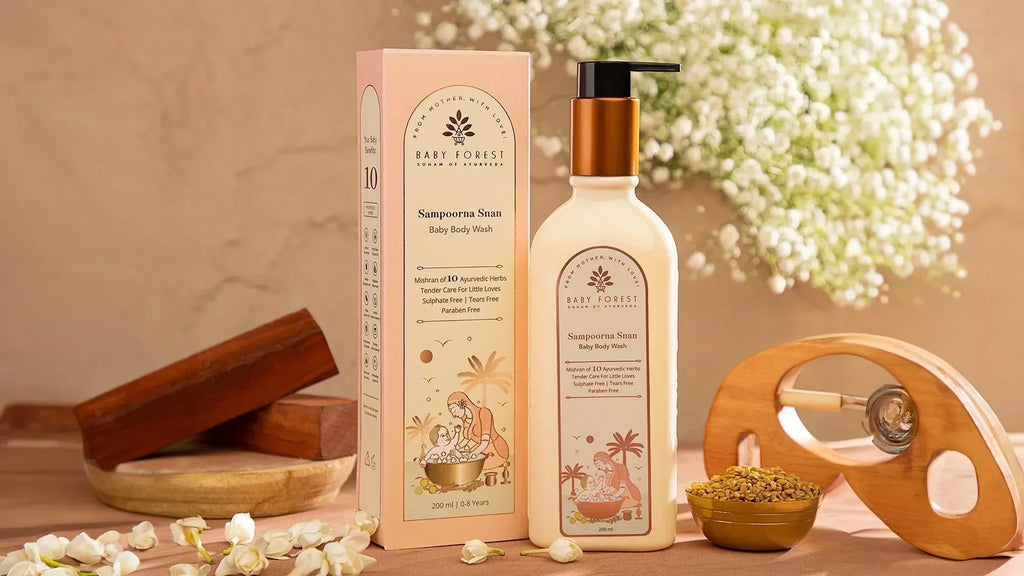
Which Baby Body Wash Is Right for Your Little One?
Body washes are a convenient and soothing way to cleanse your baby's delicate skin. Unlike traditional soaps, which can be drying, and harsh, organic body washes are formulated to be mild and moisturizing, making them a great choice for daily use. Choosing the right baby body wash is crucial because their skin is much more sensitive than adult skin. With countless options available, it can be overwhelming for new parents to find one that is safe, gentle, and nourishing. To simplify your decision, let's delve into the benefits of various natural ingredients found in baby body washes that are effective and gentle. Additional Tips for Bathing Your Baby e on your little one's tender skin.
Understanding Baby Skin
Baby skin is thinner and more susceptible to dryness and irritation compared to adult skin. This is why it's important to choose products specifically designed for babies — products that moisturize and protect without using harsh chemicals. A baby body wash with natural, soothing ingredients can help maintain the natural softness and health of your baby's skin.
Key Natural Ingredients to Look for in Baby Body Washes
When selecting a baby body wash, look for these natural ingredients known for their skin-friendly properties:
-
Jaee Giri (Oat Kernel)
Known for its soothing properties, oat kernel is excellent for baby's sensitive skin. It helps to calm irritation and is incredibly moisturizing, making it perfect for keeping your baby's skin soft and well-hydrated. -
Narial Tailam (Coconut Oil)
Coconut oil is a wonderful moisturizer and is known for its antibacterial and antifungal properties. It's gentle enough for daily use on baby's skin and helps in treating and preventing diaper rash. -
Methika (Fenugreek Leaf)
Fenugreek has natural anti-inflammatory properties that can soothe a baby's skin. It is beneficial for combating cradle cap and eczema. -
Watermelon
Rich in vitamins and water content, watermelon is a hydrating ingredient that keeps the baby's skin fresh and radiant. -
Parijata (Jasmine Oil)
Known for its calming and soothing effects, jasmine oil can help in relaxing your baby, making bath time a more pleasant experience. -
Amalaka (Indian Gooseberry)
A powerhouse of antioxidants, Indian gooseberry helps protect the skin from environmental damage and promotes healthier skin. -
Karpurapuspa (Chamomile)
Chamomile is another ingredient renowned for its soothing properties. It's especially good for babies with irritated or inflamed skin due to its anti-inflammatory benefits. -
Chandana (Red Sandalwood)
Often used in Ayurveda, red sandalwood can help cool and soothe the skin, making it ideal for use in baby body washes. -
Ghrit Kumari (Aloe Vera)
Aloe vera is hydrating and soothing and works well to treat and prevent dry skin patches and diaper rashes. -
Madhukarkati (Grapefruit)
Known for its refreshing scent and cleansing properties, grapefruit is a natural astringent which helps keep your baby's skin clean and refreshed.
Buying the Right Baby Body Wash
When choosing a baby body wash, always opt for products free from parabens, sulfates, and artificial fragrances, which can irritate delicate skin. Look for tear-free products that are derma-safe. Reading product labels and choosing washes that list natural ingredients can help ensure that the product is gentle and safe for your baby.
Additional Tips for Bathing Your Baby
- Before bathing your baby, always remember to test the water temperature.
- Use a soft washcloth to gently apply the body wash.
- Keep bath time short, especially if your baby has very dry or sensitive skin, to avoid further drying out the skin.
- After bathing, gently pat your baby's skin dry with a soft towel and apply a mild moisturizer to retain moisture.
Choosing the right body wash for your baby is about finding a balance between gentle, effective cleansing and skin nourishment. With the right natural ingredients, you can ensure that your baby's skin remains healthy, hydrated, and happy. Remember, every baby is different, so what works for one may not work for another. Don't hesitate to consult with a pediatrician if you have concerns about choosing skincare products for your baby.

Baby's First Month: Growth and Milestones Achieved
Congratulations on the first month with your newborn! This early stage is a period filled with growth, development and different baby milestones that might seem subtle but are crucial to note and know. As you navigate the first month of parenthood, witnessing your newborn's rapid development is both exhilarating and daunting. Here's an in-depth look at what you can expect from your one-month-old baby, from physical growth to sensory experiences, and some essential parenting tips.
Babies’ Physical Growth and Health
Babies typically gain around 1.5 to 2 pounds and grow approximately 1.5 to 2 inches in length since birth. It's also common for their head circumference to increase significantly. Don't be alarmed if your baby's sex organs appear swollen due to your hormones, which are normal and temporary.
Your baby's healthcare checks will focus on these growth parameters to ensure they are on the right track. Remember, babies grow at their own pace, so variations are entirely normal.
Baby Movement Milestones
In the first month, your baby will mostly exhibit reflexive movements. These are crucial for their motor development:
-
Rooting and Sucking Reflexes
These reflexes help your baby feed effectively, whether they are breastfed or bottle-fed. -
Startle Reflex (Moro Reflex)
Your baby will react with sudden movements if they feel like they are falling. It's a protective measure. -
Stepping Reflex
If you hold your baby upright with their feet touching a solid surface, they might make stepping movements. This won't last long, as it typically disappears after the second month.
Sensory Developments
At one month, your baby's senses are already actively developing:
-
Vision
Your baby will start focusing on objects 8 to 12 inches away and enjoy looking at high-contrast patterns. Your face is their favorite view, one they will begin to recognize and respond to. -
Hearing
Fully developed at birth, your baby will recognize familiar voices, especially yours, and may turn towards sounds. -
Smell
A strong sense of smell helps your baby recognize the scent of your breast milk and is comforted by it.
Baby Milestones to Watch For
During the first month, your baby will hit several developmental milestones:
-
Reflexes
Newborn reflexes like sucking, grasping, and startling are still prominent and are signs of a healthy nervous system. -
Head Control
While still limited, your baby will try to lift their head, especially during tummy time. -
Social/Emotional
The first social smiles may appear around this time, a heartwarming sign that they're starting to engage more with their environment.
Feeding and Sleep Patterns of a one-month-old baby
Feeding will still be on-demand, roughly every two to three hours, whether you're breastfeeding or formula feeding. Your baby will typically consume about 3 to 4 ounces per feeding. Ensure they're feeding effectively by monitoring their diaper output—expect around five to six wet diapers a day.
Sleep is still in short bouts—about 14 to 17 hours spread over a 24-hour period, divided between nighttime sleep and short naps throughout the day. Establishing safe sleep habits is crucial; always place your baby on its back in the baby's cradle.
How Does Baby Look?
The appearance of a newborn can sometimes surprise new parents. Babies often have a slightly misshapen head after birth due to passing through the birth canal. This usually corrects itself within a few days. Many newborns also exhibit milia (tiny white bumps) or baby acne due to maternal hormones, which clear up on their own. Another common feature is a slightly jaundiced hue caused by the buildup of bilirubin; this usually peaks around the third or fourth day after birth and gradually improves. If you notice any significant or prolonged changes in your baby's skin color or condition, it is important to consult with your pediatrician.
Common Health Concerns
Be on the lookout for common issues like cradle cap, baby acne, or more significant concerns like colic, characterized by prolonged periods of crying. Regular checkups will help address and manage these issues early.
Tracking Dirty Diapers
Tracking your baby's diapers is an effective way to monitor their health in the first month. You should see at least five to six wet diapers a day, which indicates that your baby is adequately hydrated. The stools of a newborn will change from the thick, black meconium seen in the first few days to a lighter, mustard color if breastfeeding or a darker stool if formula feeding. The frequency and consistency of their stools can vary widely; however, any signs of dehydration or unusually colored stools should prompt a discussion with your healthcare provider.
Read our blog to learn more - Baby Poop Color
More Health Tips for Babies This Month
Here are some health tips for the first month that can help you ensure your newborn's well-being:
-
Daily Pediatric Check-ups
Schedule regular visits with your pediatrician to monitor your baby's growth and development. These checks are crucial to identify any potential issues early. -
Proper Feeding Techniques
Ensure that your baby latches on correctly during breastfeeding to prevent nipple soreness and to facilitate effective feeding. If using a baby feeding bottle, choose nipples that mimic breastfeeding to avoid nipple confusion. -
Sleep Safety Practices
Always place your baby on their back to sleep to reduce the risk of SIDS. The sleep environment should be firm, flat, and free from soft bedding or toys. -
Hygiene and Skin Care
Bathe your baby two to three times a week to avoid drying out their sensitive skin. Use gentle, artificial fragrance-free washes and baby lotions designed specifically for infants. -
Handling and Comfort
Learn proper ways to hold, burp, and soothe your baby. Gentle rocking, soft singing, or swaddling can comfort your newborn and help them feel secure. -
Monitoring Diapers
Keep track of diaper changes to ensure your baby is hydrated and digesting food properly. Expect several wet diapers a day and regular bowel movements, though frequency can vary. -
Sun Exposure
Limit your newborn's direct exposure to the sun. Use protective clothing and shade as their skin is highly sensitive to UV rays, and chemical sunscreens are not recommended for the first few months.
This first month is just the beginning of a fantastic journey. Each baby is unique, and while milestones provide a guideline, the most important thing is to enjoy the process of getting to know your baby. Keep nurturing, keep loving, and keep learning together!
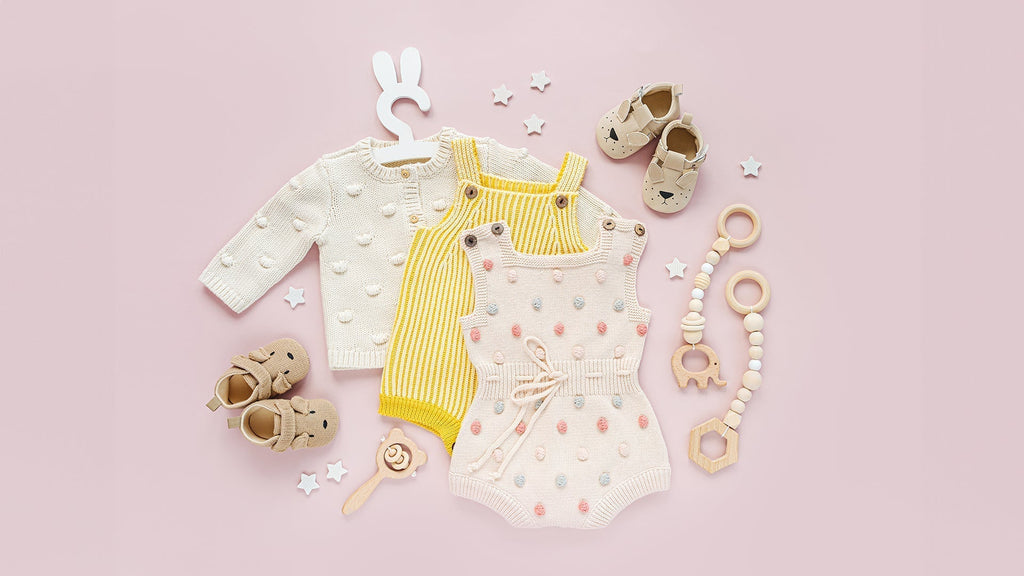
06 Must-Have Newborn Clothes for the First Few Months
Picking out clothes for a newborn can be overwhelming for new parents, especially with the vast array of adorable options online. It's important to choose the right newborn baby clothes that aren't just cute but are also comfortable for your baby and practical for you. In the first few months, your baby will need garments that are soft, easy to put on, and made from skin-friendly materials. Organic cotton is a top choice because it's gentle on your baby's sensitive skin and free from harsh chemicals.
Why Choose Organic Clothing for Your Newborn?
When it comes to newborn clothing, the fabric's safety and comfort are paramount. Organic cotton is a stellar choice for your baby's delicate skin. Grown without harmful chemicals and pesticides, organic cotton is not only softer but also much gentler than conventional cotton. It's hypoallergenic, highly breathable, and incredibly comfortable, making it perfect for protecting your baby's sensitive skin. Plus, it's durable and holds up well after many washes—essential for baby clothes that need frequent cleaning. Organic cotton clothes aren't just better for your baby; they're also better for the environment.
Essential Newborn Clothes for the First Few Months
Let's dive into the must-have newborn clothes that combine style, comfort, and practicality, all crafted from organic cotton to ensure your baby's comfort and health.
-
Overlap Knotted Bodysuit
This amazing piece of clothing is perfect for newborns. The overlap design ensures that the fabric does not irritate the umbilical cord stump, and the knotted bottom makes diaper changes quick and hassle-free. Its soft, stretchy material allows for easy movement and adjustment, accommodating your baby's rapid growth.
-
Hand-Embroidered Bodysuit
Add a touch of charm and tradition to your baby's wardrobe with a hand-embroidered bodysuit. These bodysuits feature delicate designs that are gentle on the skin, avoiding the underside embroidery that can scratch. They are as practical as they are beautiful, ensuring your baby looks lovely while staying comfy.
-
Pleated Ruffle Baby Girl Romper
The pleated ruffle romper is a delightful choice for your baby girl. This romper combines the practicality of a bodysuit with the style of a dress, making it ideal for outings or family gatherings. The snaps at the bottom allow for easy diaper changes, while the organic cotton fabric keeps your baby cool and comfortable.
-
Baby Bodysuit Set
A set of several simple bodysuits is indispensable for any newborn's wardrobe. Opt for sets that include various patterns and colours to keep your baby looking fresh and sweet. These sets ensure you have a clean outfit on hand at all times, which is essential given the surprising number of times babies can go through clothing in a day. Buy our baby bodysuit set made from 100% organic cotton and includes a matching cap, mittens, and booties for the baby.
-
Smocked Embroidery Baby Girl Bodysuit
The smocked embroidery bodysuits add a vintage charm without compromising comfort. The embroidery is carefully positioned and backed to ensure it doesn't irritate your baby's skin. These bodysuits are perfect for when you want to dress up your little one for photos or special occasions.
-
Overlap Baby Bodysuit
Another excellent everyday option is the overlap baby bodysuit, which features panels that fold over each other, making dressing and undressing easier—a boon for parents and comfortable for babies. These bodysuits are perfect for layering and come in a variety of colours that make mixing and matching fun.
Additional Tips for Choosing Newborn Clothes
When shopping for newborn clothes, always look for features that offer convenience and comfort. Choose garments with snaps and zippers that make changing easier and avoid clothes with tight elastic bands that can pinch or bind.
Dressing your newborn can be one of the many joys of new parenthood, especially when you have the right clothes at your disposal. By opting for garments made from organic cotton, you can ensure your baby's comfort and health are never compromised. These essentials not only meet the practical needs of caring for a newborn but also envelop your baby in softness and style, making those first few months even more special. Remember, while the days might feel long, the years are short, so cherish these early moments in outfits that are as tender on your baby's skin as your touch.
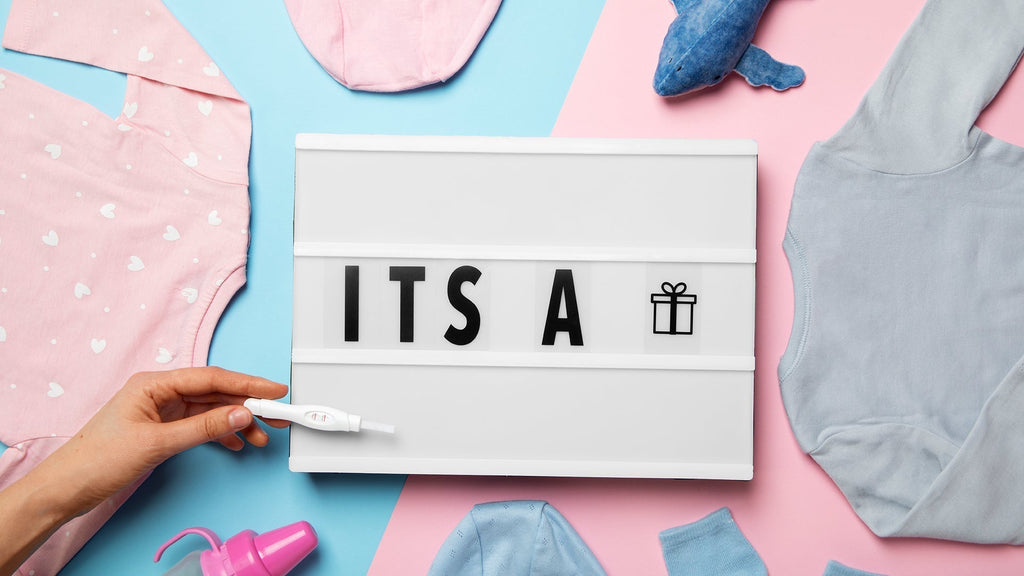
The Charm of Tradition: Old Wives’ Tales for Baby Gender ...
When expecting a new addition to the family, one of the most exciting questions is: "Is it a boy or a girl?" While modern science provides methods like ultrasounds and DNA tests for accurate predictions, many cultures still enjoy speculating based on old wives' tales. These tales, passed down through generations, add a fun and often amusing element to pregnancy. They range from observing the shape of a mother's belly to predicting based on food cravings. Although these methods aren't scientifically proven, they offer a delightful peek into cultural traditions and the human love for guessing games.
What is an Old Wives' Tale?
Old wives' tales are traditional beliefs and superstitions passed down through generations, often concerning health, pregnancy, weather, and everyday life. These tales are typically rooted in folklore and are not supported by scientific evidence. Still, they remain popular due to their cultural significance and the comfort they provide in offering explanations for the unknown. In many cultures, old wives' tales, specifically about pregnancy and baby gender prediction, are especially cherished, as they add an element of fun and anticipation to the journey of expecting parents. While they should be taken with a pinch of salt, these tales are a delightful part of cultural heritage, reflecting the wisdom and the whimsical thinking of earlier times.
How do these Tales Predict Gender?
Heart Rate Predictions
One of the most popular tales revolves around the baby's heart rate. If the infant's heart rate exceeds 140 beats per minute, the baby is probably a girl; if it falls below, the baby is probably a boy. This belief has charmed many expectant parents, prompting them to listen keenly during prenatal checkups. However, medical research suggests that there's no significant correlation between heart rate and the baby's gender. The heart rate of a fetus can vary based on numerous factors, including the baby's age and the mother's activity level.
Shape and Position of the Belly
Another widespread belief is that the shape and position of the expecting mother's belly can indicate the baby's gender. It's often said that a high, round belly signals a girl, while a low, outward-extended belly suggests a boy. This tale provokes much conversation, with family and friends often making predictions based on the mother's profile view. Despite its popularity, the shape of a woman's belly is influenced more by factors like muscle structure, the baby's position, and previous pregnancies than by the baby's gender.
Cravings and Food Preferences
Have you ever heard someone say that craving sweets means you're having a girl, or a penchant for salty and sour foods indicates a boy? These tales are among the favorites in baby showers and family gatherings. Theories suggest these cravings could be linked to hormonal changes or nutritional needs during pregnancy. Yet, like many other old wives' tales, there is no scientific backing to firmly connect specific cravings with the baby's gender.
Morning Sickness Severity
The severity of morning sickness has also been tied to baby gender predictions. The tale goes that if you experience severe morning sickness, you are likely to be carrying a girl. However, morning sickness is a complex condition influenced by numerous physiological factors, and its severity can vary widely among different pregnancies, regardless of the baby's gender.
The Ring Test
The ring test is a fun and interactive prediction method. The tale instructs you to tie a ring to a string and dangle it over the pregnant belly. According to legend, if the ring swings in a circular motion, it indicates a girl; if it swings back and forth, it is a boy. This test often serves as a delightful party trick, though its results are based on random motion rather than any physiological indicators.
Chinese Gender Prediction Chart
The Chinese gender prediction chart is said to determine the baby's gender based on the lunar age of the mother at conception and the lunar month in which the baby was conceived. This ancient chart has intrigued many for its historical value and the mystery surrounding its accuracy. Although it's fun to check, its predictions are considered coincidental rather than factual.
Other Miscellaneous Tales
There are numerous other lesser-known tales such as the garlic test—if a woman doesn't smell like garlic after eating it, she's having a girl—or the direction a mother sleeps in, with a preference for sleeping on the left suggesting a boy. Another curious tale involves mixing Drano with urine; the resulting colour is said to predict gender. While these methods are scientifically unfounded, they add an element of mystery and excitement to the waiting months.
Conclusion
Engaging with old wives' tales can be a joyful part of the pregnancy experience, offering a light-hearted way to connect with cultural traditions and community folklore. However, it's important to remember that the health of the baby and the mother is paramount, and the baby's gender, whether a boy or a girl, is ultimately a wonderful surprise. These tales are best enjoyed as part of the excitement and mystery that envelops the incredible journey of pregnancy.
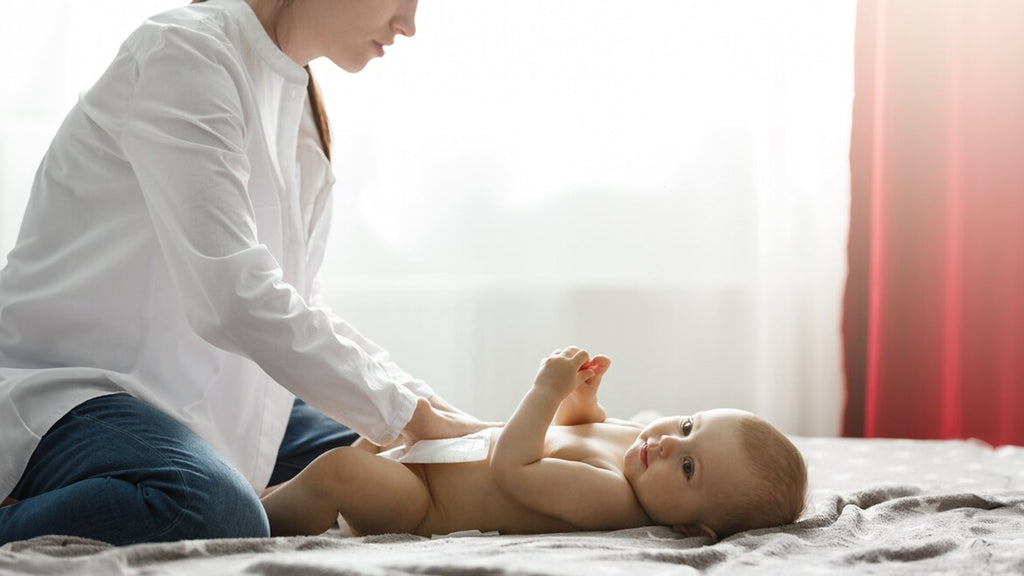
What Does Your Baby's Poop Color Mean?
As a new parent, you quickly learn that baby poop has a wide array of colours, and each hue can tell you something about your baby's health. Understanding what different poop colours might indicate is an essential aspect of monitoring your baby's wellbeing. Here's an extensive guide to what various baby poop colours mean, including insights that could help you decide when a visit to the paediatrician might be necessary.
What Do Different Baby Poop Colours Mean?
Mustard Yellow:
For babies who are breastfed, mustard yellow is the most common colour of poop. It's usually soft, loose, and might have seed-like particles. This colour is normal and indicates that your baby is digesting breast milk well.
Dark Green:
In formula-fed babies, poop often turns dark green. This colour can also appear in breastfed babies given iron supplements or if the mother consumes a significant amount of green leafy vegetables. Dark green poop is typically thicker than that of breastfed babies. It's normal and not a cause for concern unless accompanied by other unusual symptoms.
Bright Green:
Bright green poop can occur in both breastfed and formula-fed babies. It could occur if the baby is eating too quickly, consuming a lot of lactose from milk (foremilk), and not getting enough of the fattier milk that arrives later in the feeding (hindmilk). It can also be a sign of a virus. If bright green stool persists, consult a paediatrician to rule out any digestive issues.
Brown:
As babies start to eat solids, their poop typically transitions to brown. This is a normal development and indicates that your baby's digestive system is handling new foods. The consistency and exact shade of brown might vary depending on the diet.
Orange:
Orange poop can be seen in babies who are just starting on solids. It's often a result of digesting food like carrots or sweet potatoes. It's generally nothing to worry about unless the stool seems unusually loose, or your baby shows discomfort.
Black:
Black stool in newborns during the first few days is called meconium and is perfectly normal. However, if black poop occurs after the meconium stage, it could indicate bleeding in the upper gastrointestinal tract. If your baby's poop is black (and it's not meconium), you should contact your paediatrician immediately.
White:
White or very pale stool can indicate a bile duct blockage. Stools get their characteristic brown colour from bile, a digestive fluid produced by the liver. Lack of bile can indicate a serious problem, and white stool warrants an immediate call to your paediatrician.
Red:
Seeing red in your baby's diaper can be alarming. Red can signify that there is blood in the stool. This might be due to a milk allergy, a small anal fissure (crack), or something more serious like an intestinal infection. If you notice red poop, it's best to consult a paediatrician to understand the cause.
When to Worry About Baby Poop Color
While variations in poop colour can be normal, certain colours might indicate health issues:
Black, White, or Red Poop:
As mentioned, these colours can signify more serious conditions and should prompt an immediate call to your paediatrician.
Consistent Changes in Color:
Sudden and persistent changes in stool colour can also be a sign of dietary reactions or health issues.
Accompanying Symptoms:
If unusual poop colour is accompanied by other symptoms like fever, vomiting, lethargy, or irritability, it might be time to visit your doctor.
Tips for Monitoring Baby Poop
Keep a Diaper Diary:
Track your baby's poop colours and textures to notice patterns or changes over time.
Notice Other Symptoms:
Always consider the overall wellbeing of your baby. Are they feeding well? Do they seem unusually upset? These clues can help you determine if a poop colour is part of a larger issue.
Consult Your Pediatrician:
When in doubt, always consult your pediatrician. They can provide guidance and peace of mind.
Conclusion
Monitoring the colour of your baby's poop is a practical way to keep tabs on their health. Most variations are normal, especially with changes in diet. But knowing what each colour can represent will help you take preventative measures for your child's health and make sure they get the right care when they do. Remember, you know your baby best, and noticing changes in their poop can be one of the first signs that they might need a little extra attention.
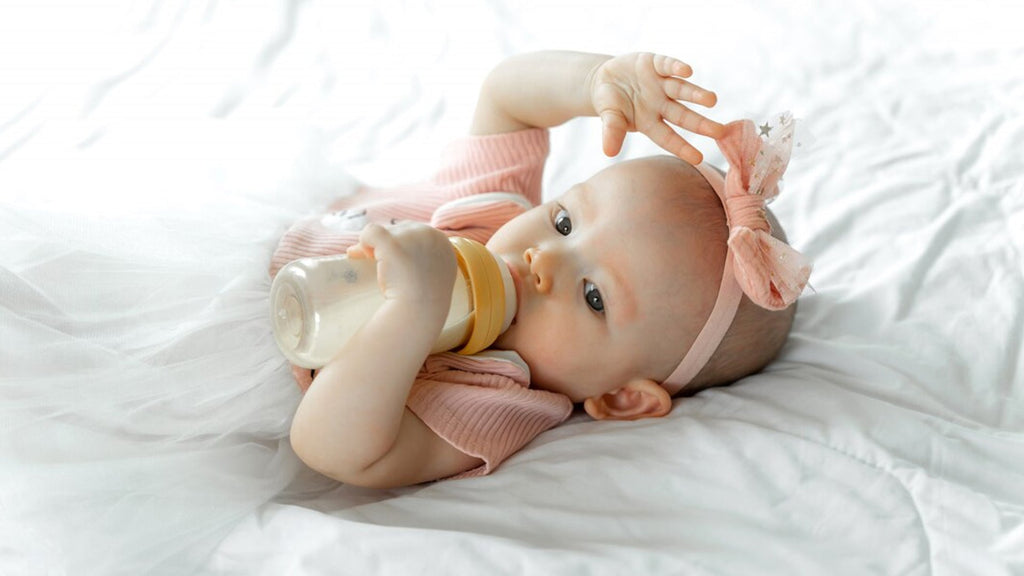
How to Safely Heat Milk for Your Baby: Tips and Techniques
Heating milk for your baby might seem like a simple task, but doing it safely is crucial to ensure your baby's health and comfort. The temperature at which you serve baby milk is important, regardless of whether you use formula or breast milk. Here's an in-depth guide on how to safely heat milk for your baby, including practical tips and techniques that every parent should know.
Understanding the Importance of Proper Milk Temperature
Babies have delicate digestive systems, and serving milk that is too hot or cold can lead to discomfort or health issues. Overheated milk can burn your baby's sensitive mouth and throat, while milk that's too cold might not be as comforting or might upset your baby's stomach. Maintaining an ideal temperature ensures that the baby milk is soothing and safe for your baby to drink.
Safe Ways to Heat Baby Milk
Using a Bottle Warmer:
A bottle warmer is a convenient and safe way to heat milk uniformly. It reduces the risk of hotspots, which are common when using microwaves. Here's how to use a bottle warmer:
- Fill the warmer with water as instructed by the manufacturer.
- Place the bottle in the warmer.
- Set it to the desired temperature. Most warmers have a setting that specifically mentions the ideal temperature for baby milk.
- Remember to test the milk temperature on your wrist before feeding your baby. It should feel lukewarm, not hot.
Water Bath Method:
This method involves heating water in a pot or a larger container and then placing the baby bottle in the hot water to warm:
- Heat water in a pot until it's warm but not boiling.
- Remove the pot from the heat source.
- Place the baby bottle in the warm water for a few minutes.
- Shake the baby feeding bottle gently to ensure even heating.
- Before feeding, feel the milk on the inside of your wrist.
Running Hot Tap Water:
If you're in a hurry or don't have access to a bottle warmer or stove, you can use hot tap water:
- Run hot water from the tap.
- Hold the bottle under running hot water, turning it continuously to evenly heat the milk.
- Regularly check the temperature until it's warm to the touch.
Tips for Heating Breast Milk
Breast milk requires careful handling to preserve its nutritional and immunological properties. Here are some tips specifically for heating breast milk:
-
Thaw Frozen Breast Milk Safely:
Breast milk can be thawed by running warm water over the bottle or by keeping it in the refrigerator for the entire night. Microwaves can damage nutrients and produce hotspots, so stay away from them. -
Avoid Refreezing:
Once breast milk is thawed, do not refreeze it. Use thawed breast milk within 24 hours. -
Gently Swirl, Don't Shake:
Gently swirl the bottle to mix the fat, which may have separated. Avoid vigorous shaking as it can break down some of the beneficial proteins in breast milk.
Precautions When Heating Formula
The formula doesn't contain the delicate immune properties of breast milk, but it still needs to be prepared with care:
-
Check Expiry Dates:
To be sure a formula package is safe to use, always check the expiration date. -
Follow Mixing Instructions:
Be precise with water and formula ratios to ensure proper nutrition.
-
Use Quickly:
Use freshly prepared formula within 1-2 hours if kept at room temperature or store it in the refrigerator for up to 24 hours if not used immediately.
Testing Milk Temperature
Testing the temperature of the baby milk is a critical step. Always test the milk by dropping a few drops on the inside of your wrist. The milk should feel warm, not hot. This area is more sensitive to heat, making it a reliable gauge for what your baby will feel.
Final Thoughts
Heating milk for your baby doesn't have to be a stressful process. By following these tips and techniques, you can ensure that the milk is at a safe temperature, preserving all the essential nutrients, whether you are using breast milk or formula. Remember, every baby is different; some might prefer their milk warmer, while others like it at room temperature. Understanding these preferences while keeping safety in mind will make feeding time a comfortable and joyful experience for both you and your baby. Always prioritize safe practices to turn mealtime into a nurturing moment that enhances bonding with your little one.
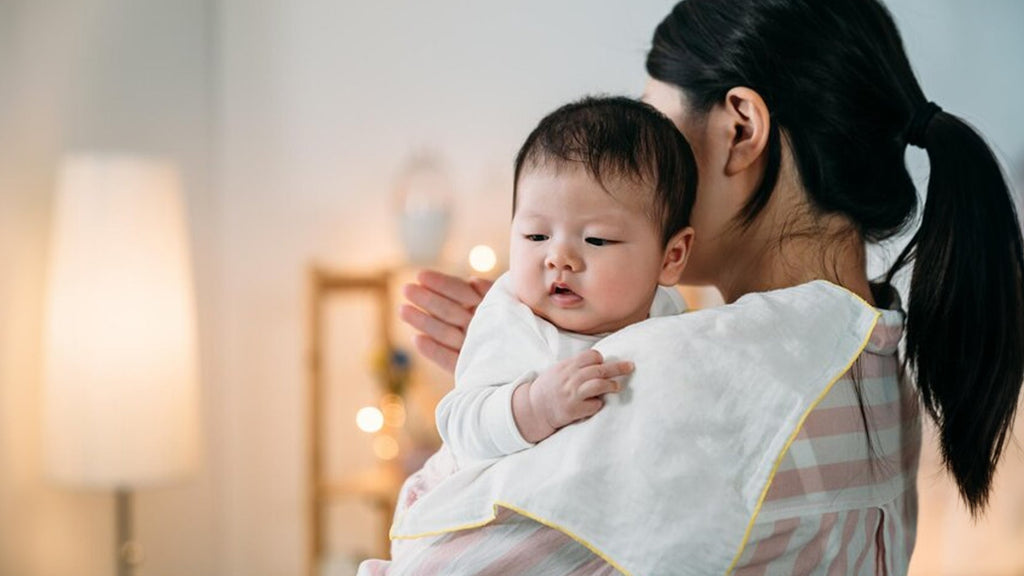
Burping Baby 101: Why It Matters and How to Do It Right!
Burping a baby is one of those parenting skills that might seem simple, but it holds immense importance in your little one's early months. It's not just about helping your baby stay comfortable; burping plays a crucial role in your infant's digestive health and overall well-being. In this blog, we'll explore why burping is necessary, how to burp your baby effectively, and some tips to make it easier for both you and your baby.
Why is Burping Your Baby Important?
Releases Trapped Air
During feeding, babies often swallow air, especially when they feed vigorously or if they are bottle-fed. This air can get trapped in their stomachs, causing discomfort, bloating, and fussiness. Burping helps to release this air, making your baby feel more comfortable.
Prevents Spit-ups and Gastrointestinal Issues
Trapped air can lead to spit-ups or even vomiting if not expelled. Regular burping helps minimize these occurrences by releasing the air that pushes milk and stomach contents back to the oesophagus.
Promotes Better Feeding Habits
When babies swallow air, they might feel falsely full, leading them to eat less than they need. Burping can make room in their stomachs for the right amount of milk, ensuring they get the nutrition they require.
How to Burp Your Baby?
The Timing
Most parents find it helpful to burp their babies during and after each feeding. If you're breastfeeding, try burping when switching breasts. If you're bottle-feeding, every 2-3 ounces is a good interval. However, if your baby is particularly gassy or prone to spit-ups, more frequent burping might be necessary.
Techniques to Burp Your Baby
There are several ways to burp your baby, and different methods may work better at different times or for different babies. Here are the most popular ones:
Over the Shoulder
Hold your baby against your chest so their chin is resting over your shoulder. Support their bottom with one hand and gently pat or rub their back with the other hand. This position is helpful because it uses gravity to aid the escape of trapped air.
Sitting on Your Lap
Place your baby on your lap facing away from you. Use one hand to support their body by holding their chest and chin (make sure not to squeeze their throat). Lean them slightly forward and pat or rub their back with your other hand.
Face Down Across Your Lap
Lay your baby face down on your lap, turned slightly to one side to ensure their airway is open. Support their chin and jaw with one hand (again, not putting pressure on the throat). Gently pat or rub their back with your other hand.
Tips for Successful Burping
Be Patient and Gentle
Sometimes, it may take a few minutes for the air to come up. Be patient and keep gently patting or rubbing your baby's back. The key is gentle pressure; too much force is not necessary and can be uncomfortable to your baby.
What to Do If Your Baby Doesn't Burp
Not all babies need to burp after every feeding. If your baby doesn't burp after a few minutes but seems comfortable and happy, it's okay to put them down. However, if they seem uncomfortable or fussy, continue trying or try again after a short break.
Handling Spit-ups
Even with effective burping, some babies might still spit up. This is usually normal. Keep a burp cloth handy during and after feedings to protect your clothes and clean up any mess. If spit-ups seem excessive or your baby appears to be in discomfort, consult your paediatrician to rule out any underlying issues.
Burping is a simple yet essential part of baby care that helps keep your little one comfortable and happy. While it may seem tedious at times, especially during night feedings, remember that it's helping your baby digest their food properly and stay healthy. With practice, patience, and persistence, you'll soon find what works best for burping your baby, making feeding times smoother and more enjoyable for both of you.
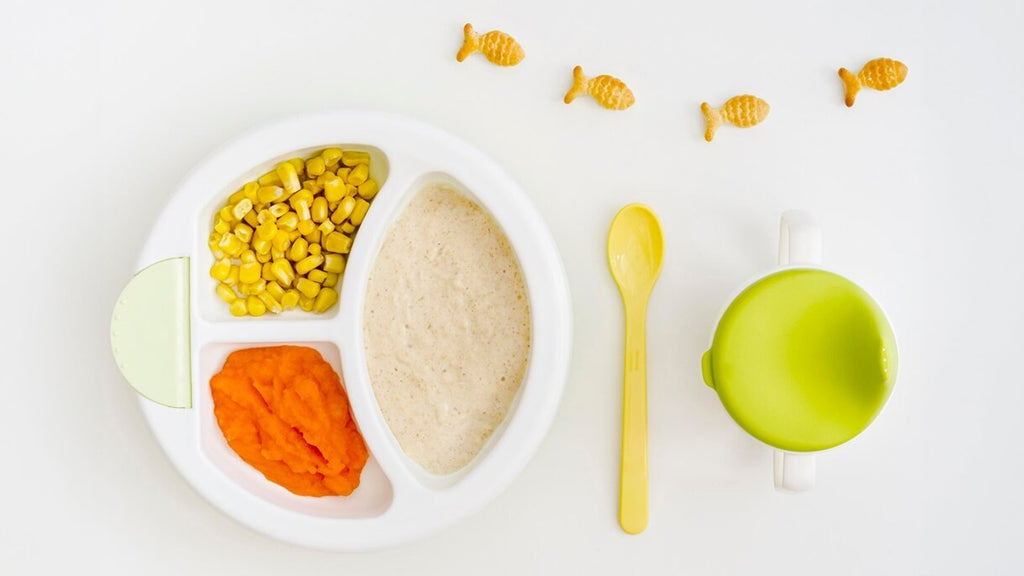
Homemade Baby Food: 2 Simple Recipes for Healthy Meals
Introducing your newborn to solid foods marks a significant milestone in their development, and it's a journey filled with excitement and wonder for both the parent and their little one. Crafting homemade baby food recipes not only helps you to tailor meals to your baby's needs but also creates a heartwarming bonding experience between parent and child. Here, we'll delve into the joys of this adventure and share two simple yet delightful baby food recipes to make this moment even more memorable. Let's infuse this process with the joy and magic it deserves!
Why Choose Homemade Baby Food?
Making baby food at home has numerous advantages. Homemade baby food is free from preservatives, artificial flavours, and added sugars that are often found in store-bought varieties. Additionally, preparing food at home is cost-effective and can save you money in the long run.
Homemade baby food also introduces your baby to the natural flavours of fruits, vegetables, and grains, helping them develop a taste for wholesome foods. This early exposure to a variety of flavours and textures can set the foundation for healthy eating habits later in life.
Essential Tips for Making Homemade Baby Food
Before we dive into the recipes, here are a few essential tips to keep in mind:
-
Choose Fresh Ingredients
Always opt for fresh, organic produce to ensure your baby gets the best nutrients without harmful pesticides or chemicals. -
Cook Thoroughly
Make sure to cook all fruits and vegetables thoroughly to make them soft and easy to puree. -
Hygiene is Key
Maintain a clean kitchen environment and wash your hands, utensils, and cooking surfaces to prevent contamination. -
Introduce One Food at a Time
Begin with single-ingredient purees to identify any potential sensitivities, then gradually introduce different foods.
Now, let's look at two simple and nutritious recipes that you can make at home.
Recipe 1: Carrot and Apple Puree
Carrots and apples are both rich in essential vitamins and minerals. This combination is not only nutritious but also has a naturally sweet taste that babies love.
Ingredients:
- Two medium carrots, peeled and chopped
- One medium apple, peeled, cored, and chopped
- Water or breast milk/formula (optional)
Instructions:
-
Steam the Vegetables
Start by steaming the carrots and apple pieces. Steaming helps retain the nutrients better than boiling. You can use a steamer basket over boiling water or a microwave steamer. Steam the carrots for about 10 minutes until they are tender, then add the apple pieces and steam for another 5 minutes until both are soft. -
Blend to a Smooth Puree
Once the carrots and apples are tender, let them cool slightly. Add them to a blender or food processor. Blend until smooth. If the mixture is too thick, you can add a little water, breast milk, or formula to reach the desired consistency. -
Serve or Store
Allow the puree to cool completely before serving it in a baby feeding bowl to your baby. You can store any leftovers in small airtight containers in the refrigerator for up to 48 hours or freeze them for up to a month.
Recipe 2: Rice and Lentil Khichdi
Khichdi is a traditional Indian comfort food that is perfect for babies. This rice and lentil dish is easy to digest and packed with nutrients. It's an excellent way to introduce your baby to more complex flavours and textures.
Ingredients:
- Two tablespoons rice
- Two tablespoons yellow moong dal (split yellow lentils)
- One small carrot peeled and chopped (optional)
- One small potato, peeled and chopped (optional)
- A pinch of turmeric
- Water
- A tiny pinch of cumin seeds (optional)
- A small piece of garlic (optional)
- A few drops of ghee (optional)
Instructions:
-
Rinse and Soak
Rinse the rice and lentils thoroughly under running water. Soak them in water for about 30 minutes to soften them, which helps in faster cooking. -
Cook the Khichdi
In a pressure cooker, add the soaked rice and lentils, along with chopped carrot and potato if using. Add a pinch of turmeric and enough water to cover the ingredients (about 2-3 cups). For added flavour, you can also add a tiny pinch of cumin seeds and a small piece of garlic. Pressure cook for about 2-3 whistles until everything is soft and mushy. -
Mash to Desired Consistency
Once the pressure releases naturally, open the cooker and mash the khichdi to the desired consistency using a spoon or a hand blender. If it is too thick, you can add a little more water or breast milk/formula. -
Add Ghee (Optional)
For an extra nutritional boost, consider adding a few drops of ghee to the khichdi. This adds healthy fats that are beneficial for your baby's growth and development. -
Serve or Store
Allow the khichdi to cool to a safe temperature before serving it to your baby. Store any leftovers in the refrigerator for up to 48 hours or freeze in small portions for later use.
Why Homemade Baby Food is the Best Choice
Homemade baby food allows you to control what goes into your baby's meals, ensuring that they are getting the best nutrition possible. By using fresh, organic ingredients, you can avoid preservatives, artificial flavours, and added sugars. This not only provides health benefits but also helps cultivate a palate for natural and wholesome foods.
Furthermore, homemade baby food can be tailored to your baby's taste preferences and dietary needs. It can be a more cost-effective option in the long run, as you can prepare meals in bulk and store them for future use.
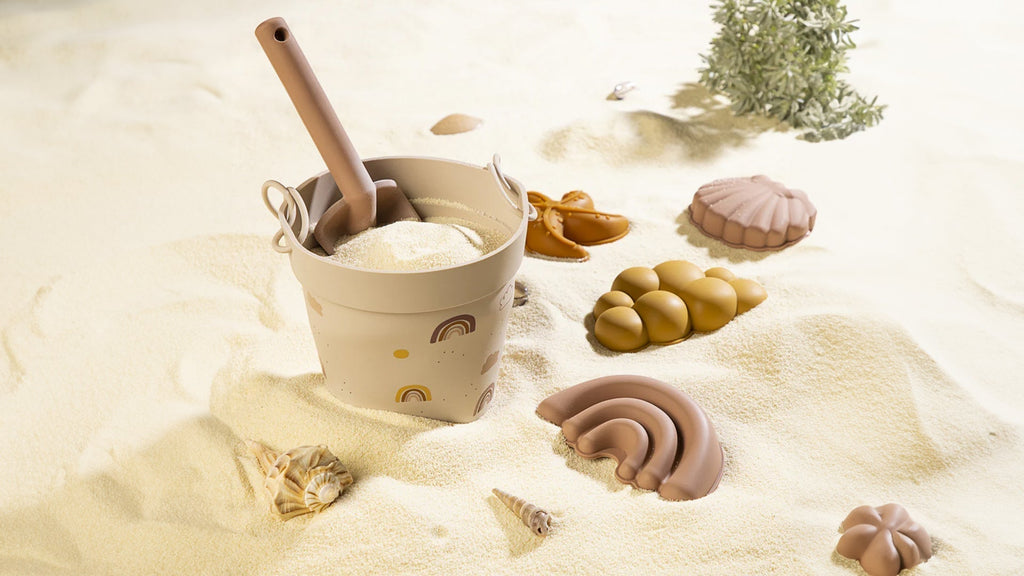
Essential Tips for a Perfect Beach Day with Kids this Summer
A beach day with kids can be a great way to spend the summer, but it takes careful planning to ensure everything runs properly. There are various factors to consider, like carrying the appropriate gear and keeping your children safe and entertained. This blog contains a few tips to help you have a fantastic beach day with your children.
Preparation is Key
Before you head to the beach, make a checklist of all the items you need to bring. Preparation ensures that you have everything necessary to keep your children comfortable, safe, and entertained. This includes beach toys, sun protection items, food, and drinks. It's always better to be over-prepared than to realize you've forgotten something crucial once you're already at the beach.
Sun Protection
One of the most important aspects of a beach day is protecting your kids from the sun. Young children have sensitive skin that is more prone to sunburn. Apply a broad-spectrum SPF30 baby sunscreen lotion to your child's skin about 30 minutes before sun exposure. Reapply every two hours or after swimming. Choose a sunscreen made exclusively for babies, ensuring that it is mild on their sensitive skin. Make sure your children are wearing wide-brimmed hats to shield their faces and necks from the sun. Setting up a beach umbrella or tent provides a shaded area where your kids can take a break from the sun. This is especially crucial during peak sunlight hours, which normally occur between 10 a.m. and 4 p.m.
Beach Toys and Entertainment
Keeping your kids entertained at the beach is crucial for a fun day. Bringing along the right beach toys can make a significant difference. The beach munchkin bucket is a versatile toy that can provide hours of entertainment. Your kids can use it to build sandcastles, collect seashells, or even catch small sea creatures. It's lightweight, portable, and ideal for beach trips. If your children enjoy swimming, inflatable toys and floaties are great additions. They can float on the water safely and have fun splashing around.
Baby Care Essentials
When spending a day at the beach with a baby, having the right baby care essentials is critical. Baby wipes are indispensable for cleaning up messes, wiping sandy hands, and even cooling down your baby's skin. Choose wipes that are gentle and free of artificial fragrance to avoid irritation. Talc-free baby powder is perfect for removing sand from your baby's skin. Sprinkle some powder on their skin and brush off the sand effortlessly. This simple trick can keep your baby comfortable and free from irritation. Keep your kids hydrated by offering water frequently. Pack healthy snacks like fruits, crackers, and sandwiches to keep their energy levels up throughout the day.
Appropriate Beachwear for Babies
Choosing the right beachwear for your baby is essential for their comfort and protection. A Hand Embroidered Gather Top with Underpants is a cute and stylish outfit that is perfect for a beach day. The lightweight fabric keeps your baby cool, while the hand embroidery gives a touch of elegance. The underpants provide coverage and keep the sand out. A full-sleeved baby bodysuit set offers excellent sun protection for your baby's delicate skin. Look for ones made from breathable materials that dry quickly. This outfit is perfect for cooler beach days or when you need extra sun protection. An overlapping baby bodysuit is simple to put on and remove, making diaper changes a quick game. The design ensures that your baby stays comfortable, and the soft fabric is gentle on their skin.
Safety Tips
Always keep a close eye on your kids, especially when they are near the water. Designate a responsible adult to supervise at all times. Teach your children basic water safety rules, such as not swimming alone and understanding the dangers of strong currents. Pack a simple first aid kit that includes bandages, antiseptic wipes, and other items you'll need to heal small wounds. Dehydration can occur quickly under the sun. Ensure your kids drink plenty of water and take breaks in the shade to cool down.
After the Beach
After a fun-filled day at the beach, there are a few things to keep in mind. Rinse off the sand and saltwater from your kids' skin and hair. Check your child's skin for any signs of sunburn. If you notice redness or irritation, apply aloe vera gel or a soothing lotion to ease the discomfort.
A beach day with kids can be a delightful and memorable experience with the right preparation and care. By ensuring proper sun protection, bringing the right toys, packing essential baby care items, and choosing appropriate beachwear, you can create a perfect beach day for your family. Remember to prioritize safety, stay hydrated, and engage your kids in fun activities. With these tips, you are well-equipped to enjoy a wonderful day at the beach with your little ones this summer.
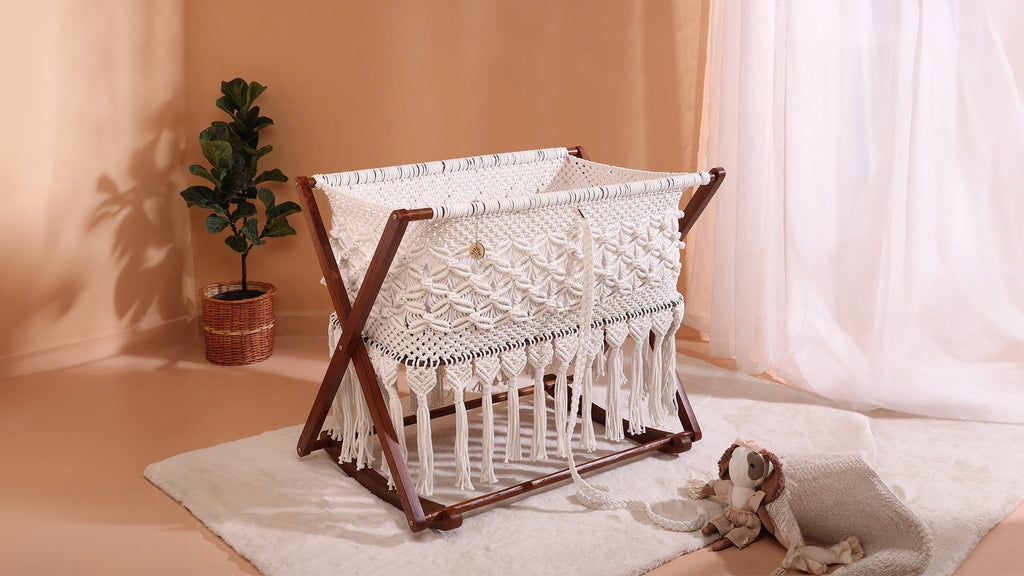
07 Things to Know Before You Buy a Baby Cradle in India
Buying a baby cradle is one of the most significant decisions for new parents, as it provides a safe and comfortable space for your little one to sleep. With various options available in the market, choosing the right cradle can be overwhelming. This guide will help you understand the essential aspects to consider before purchasing a baby cradle in India, ensuring you make an informed and thoughtful choice.
Importance of a Handmade Cradle
Handmade cradles are crafted with care and precision, often featuring unique designs and superior quality. Usually, these cradles are crafted by expert artisans who take great care to ensure both longevity and safety. A handmade baby cradle not only adds an aesthetic appeal to your baby's nursery but also provides a personal touch that mass-produced cradles lack. In India, handmade cradles are often made from natural materials like wood, which are safe and non-toxic for your baby.
Benefits of a Detachable Rocker
A detachable rocker is a valuable feature to look for in a baby cradle. The gentle rocking motion mimics the movements of a mother's arms, providing a sense of security and relaxation for your baby. This can be particularly soothing during nap times or when your baby is fussy. The ability to detach the rocker allows for versatility, as you can use the cradle as a stationary bed when needed. This feature ensures that the cradle can adapt to different situations and needs, making it a practical choice for parents.
Durability is Key
When buying a baby cradle, durability is a crucial factor to consider. You want a cradle that will last through your baby's early years and potentially be used for future siblings. Look for cradles made from sturdy materials like natural wood, which is known for its strength and longevity. A well-made cradle will endure normal wear and tear and give your child a secure place to sleep. Check for features like strong joints, smooth finishes, and stable bases to ensure the cradle's durability.
The Charm of Natural Wood
Natural wood cradles are a popular choice among parents due to their aesthetic appeal and safety. Wood is a durable and sturdy material that provides a stable sleeping environment for your baby. In addition, natural wood is suitable for young children because it doesn't contain any poisons or dangerous compounds. Wooden cradles also tend to have a timeless look, fitting seamlessly into various nursery themes and styles. Wood is also simple to keep and clean, so your baby's sleeping space will always be safe and hygienic.
Ease of Assembly
As a new parent, you'll appreciate a cradle that is easy to assemble. Look for cradles that come with clear instructions and all the necessary hardware. Choosing an easy-to-assemble cradle saves time and allows you to prioritize other duties. Additionally, an easy-to-assemble cradle can be conveniently moved and reassembled in different rooms as needed. This flexibility is especially beneficial in the early months, when you may want to keep your infant close at all times.
Value for Money
When investing in a baby cradle, it's important to consider the value of money. While it might be tempting to opt for the cheapest option, remember that a high-quality cradle will provide better safety, comfort, and durability. Consider the features, materials, and craftsmanship of the cradle to ensure you're getting the best value for your investment. A durable cradle can be used for several children and passed down to future generations, making it a good investment.
Baby Forest's macrame wooden baby cradle combines the beauty of handmade craftsmanship with the durability of natural wood. These cradles frequently contain complex macrame designs, which offer a sense of elegance to the nursery. The gentle, detachable rocking motion of a macrame wooden cradle mimics the soothing movements of a mother's arms, helping your baby feel secure and relaxed. Measuring approximately 36x36x20 inches, these cradles are ideal for babies up to 3 years of age, providing a comfortable and spacious sleeping area.
Related Read - A Guide to Creating the Perfect Sleep Space for Your Baby
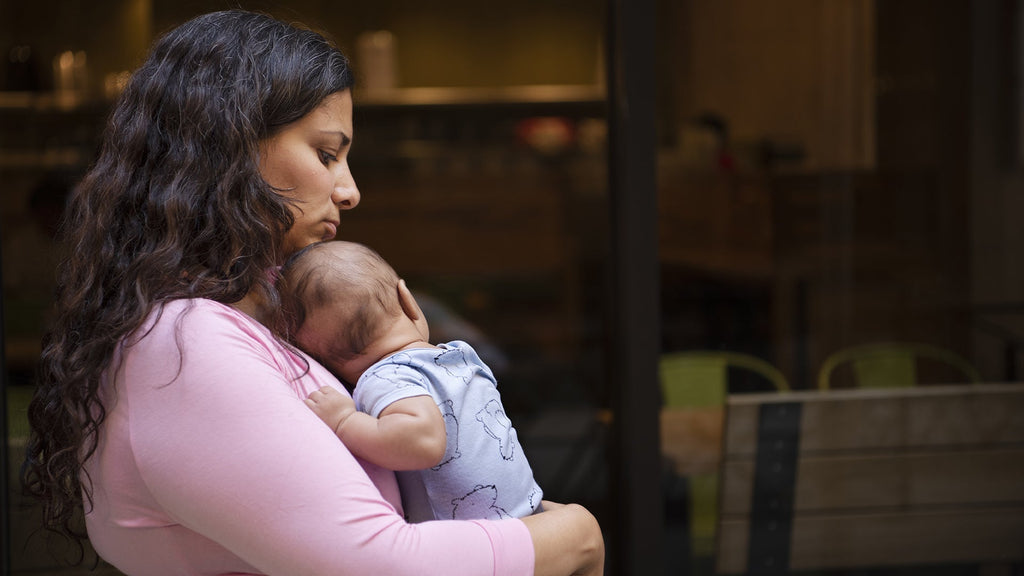
Early Signs of Postpartum Complications: What to Look Out...
Experiencing the arrival of a new baby is a joyful and life-changing experience for parents. However, the postpartum period, the first six weeks after childbirth, can be a challenging time as the mother's body undergoes significant changes to recover from pregnancy and delivery. While many mothers recover without complications, some may experience postpartum complications that require immediate medical attention.
Recognizing the early signs of potential complications during pregnancy is crucial. By staying informed about these symptoms, expectant mothers can seek prompt medical care, which can greatly influence the pregnancy's outcome. This blog talks about early signs of postpartum complications to help you understand what to watch for and when to seek medical help.
What are Postpartum Complications?
Postpartum complications can occur for various reasons, including infections, cardiovascular issues, and mental health challenges. Preventing major health issues requires early discovery and treatment. Knowing the warning signs can make a significant difference in outcomes for new mothers.
1. Postpartum Hemorrhage (PPH)
One of the most serious postpartum complications is excessive bleeding, known as postpartum hemorrhage (PPH). PPH usually develops within 24 hours of delivery; however, it can sometimes arise up to 12 weeks later. It is distinguished by profuse bleeding that goes through more than one sanitary pad each hour or the passage of big blood clots. Other symptoms include dizziness, fainting, a rapid heart rate, and low blood pressure. If not treated promptly, PPH can lead to severe blood loss and shock .
2. Infections
Infections are another common postpartum complication that can occur in the uterus (endometritis), at the incision site of a cesarean section, or in the perineal area. Symptoms of an infection include a fever of 100.4°F (38°C) or higher, foul-smelling vaginal discharge, and pain or swelling at the incision or perineal area. Untreated infections can cause major health difficulties, so it's crucial to check for these indicators and seek medical attention if necessary.
3. Deep Vein Thrombosis (DVT)
Deep vein thrombosis (DVT) is a disorder in which blood clots form in deep veins, typically in the legs. This can be a risk if the clot spreads to the lungs and causes a pulmonary embolism. Symptoms of DVT include swelling, redness, warmth, and pain in one leg, typically the calf. The affected leg may feel tender, and the pain may worsen when walking. It is important to seek medical attention immediately if these symptoms are observed.
4. Postpartum Preeclampsia
Preeclampsia is a disorder that causes high blood pressure and excess protein in the urine during pregnancy, but it can also occur after birth. Postpartum preeclampsia typically occurs within 48 hours to six weeks after delivery. Warning signs include severe headaches that do not respond to medication, vision changes such as blurriness or light sensitivity, and swelling in the face, hands, or legs. Early diagnosis and treatment are essential to avoid consequences like seizures or stroke.
5. Cardiovascular Issues
Heart-related complications can also arise during the postpartum period. Peripartum cardiomyopathy, a type of heart failure that occurs during the last month of pregnancy or up to five months postpartum, can cause symptoms such as shortness of breath, chest pain, extreme fatigue, and a rapid heartbeat. These symptoms should not be ignored, as they may indicate serious cardiovascular issues that require immediate medical attention.
6. Mental Health Conditions
Mental health issues are common postpartum complications, ranging from the "baby blues" to more severe conditions such as postpartum depression (PPD) and postpartum psychosis. Postpartum depression symptoms include continuous melancholy, hopelessness, significant mood fluctuations, difficulties bonding with the infant, and suicidal ideation. Postpartum psychosis is a rare but significant mental illness that can cause hallucinations, delusions, and severe agitation. If these symptoms appear, seek immediate medical attention, as early intervention can result in better outcomes.
When to Seek Medical Attention
It's important to seek medical attention promptly if any of these symptoms occur. Early identification and treatment can greatly improve the outcomes for new mothers. The American College of Obstetricians and Gynaecologists (ACOG) recommends that postpartum visits be planned within the first three weeks of birth, followed by a full evaluation at 12 weeks. Additional visits may be necessary for those with specific health risks.
Prevention and Management of Postpartum Complications
While not all postpartum complications can be prevented, taking proactive steps can help manage risks. Discussing health history with an OB/GYN during pregnancy, attending all postpartum checkups, and staying in close contact with a healthcare provider if any unusual symptoms arise are essential measures. Developing a postpartum care plan before delivery and having support systems in place can also make a significant difference in managing postpartum health.
Related Read - Nourishing the New Mother: Ayurvedic Postnatal Care Practices
The postpartum period is a critical time for new mothers as they adjust to life with their newborns. Recognizing the early signs of postpartum complications can save lives and ensure a smoother recovery. Staying aware and vigilant allows new moms and their families to take proactive efforts to treat any health issues that develop, safeguarding the health of both mother and baby. Always consult with healthcare providers for personalized advice and care, and do not hesitate to seek help if any concerning symptoms occur.
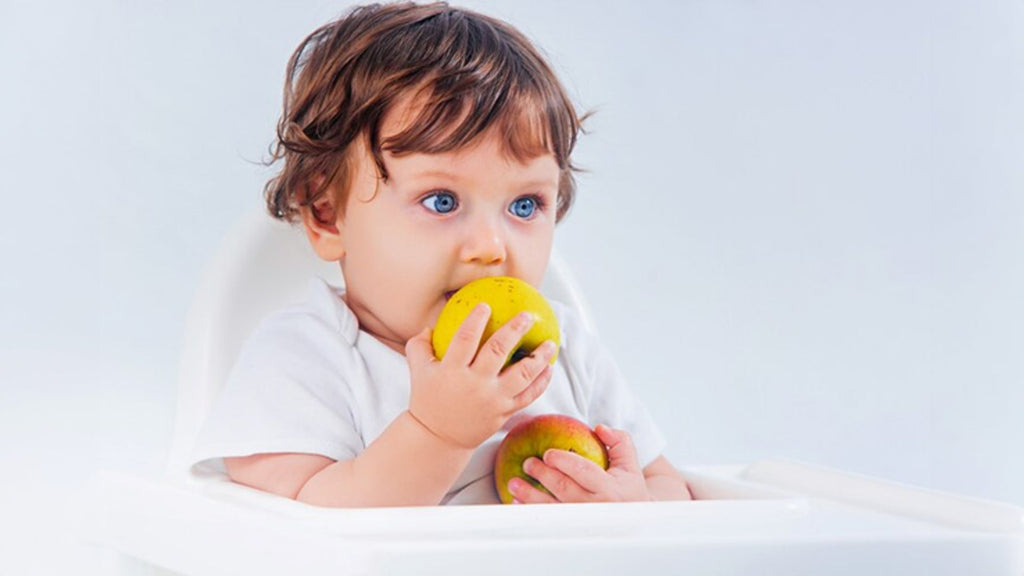
9 Easy Tips to Encourage Self-Feeding for Babies
Encouraging your baby to self-feed is a significant milestone in their development. It fosters independence, enhances motor skills, and makes mealtimes more enjoyable for parents and children. Transitioning from spoon-feeding to self-feeding, especially through baby-led weaning, can be challenging, but it becomes a rewarding experience with the right approach. Here are eight easy tips to help you encourage your baby to self-feed, addressing common questions and concerns along the way.
Ensure Your Baby Is Ready
The first step in promoting self-feeding is ensuring your baby is ready for this new challenge. Most babies show signs of readiness between six and nine months. These signs include showing interest in food, reaching for objects, and being able to sit up without support. It's essential to remember that every baby develops at their own rate, so some may take more time to exhibit these signs. Being patient and attentive to your baby's cues is crucial during this transition.
1. Introduce Finger Foods
Introducing finger foods is a great way to start the self-feeding journey. Choose easy-to-grasp and chew foods, such as soft fruits like banana slices, steamed vegetables, and small pieces of cheese. These foods are perfect for baby-led weaning as they encourage your baby to pick up and taste different textures. Offering foods that can be easily picked up by small hands and do not pose a choking hazard is essential. Initially, your baby might play with the food rather than eat it, which is a natural part of the learning process.
2. Embrace the Mess
A common concern among parents is the mess that comes with self-feeding. Embracing the mess is important as it is a crucial part of your baby's sensory development. To manage the mess, use a highchair with a tray and place a mat or newspaper underneath to catch spills. You can use a bamboo feeding bowl, the silicone suction base prevents mealtime spills by securely gripping flat surfaces. This keeps your baby safely engaged as they learn to feed themselves, simplifying the weaning process for both mother and baby. It’s an easy-to-clean and durable choice for parents! Dressing your baby in a bib or an old shirt so that you don't mind getting dirty. Over time, as your baby becomes more proficient, the mess will decrease.
3. Create a Positive Mealtime Environment
Fostering a positive and relaxed mealtime environment promotes self-feeding. Babies are highly perceptive and can sense stress or frustration. Try to keep mealtimes calm and enjoyable. Sitting with your baby and eating together as a family whenever possible not only sets a good example but also helps your baby associate mealtime with positive experiences. Praise and encouragement go a long way in boosting your baby's confidence in their self-feeding abilities.
4. Introduce a Variety of Textures and Flavors
Variety is key to keeping your baby interested in self-feeding. Gradually introduce different textures and flavours to enhance their sensory experiences and help them develop a diverse palette. This is particularly important for weaning foods, as it helps babies adjust to new tastes and textures. It's normal for babies to be cautious about new foods. Offer a variety of foods regularly, but do not force your baby to eat. Allow them to explore and try new things at their own pace, fostering a more adventurous eater.
5. Use Baby-Friendly Utensils and Tools
Using the right tools can significantly aid the self-feeding process. Invest in baby-friendly utensils such as spoons with easy-to-grip handles and shallow bowls. Bamboo bowls and plates with suction bases can prevent them from being thrown or knocked over. These bamboo feeding plates are designed to make it easier for your baby to scoop and pick up food independently, making the self-feeding process smoother.
6. Establish a Consistent Mealtime Routine
Establishing a consistent mealtime routine helps your baby understand when to expect food, reduces fussiness, and makes them more willing to participate. Regular meal and snack times provide structure, making it easier for your baby to develop healthy eating habits. Avoid distractions like television or toys during mealtimes to help your baby focus on eating, reinforcing the importance of mealtime as a dedicated activity.
7. Gradually Introduce Utensils
As your baby develops and becomes more adept at self-feeding, gradually introduce utensils. Start with a spoon and let your baby practice dipping it into soft foods like yoghurt or mashed potatoes. Initially, they might use their hands in conjunction with the spoon, which is perfectly fine. The goal is to get them used to handling utensils and improve their coordination. Over time, your baby will become more adept at using utensils independently.
8. Address Choking Concerns
Addressing concerns about choking is crucial when encouraging self-feeding. Always supervise your baby during meals and ensure that the foods offered are appropriate for their age and chewing ability. Slice food into small, manageable pieces and steer clear of hard, round, or sticky items that could present a choking risk. Familiarize yourself with basic first aid for choking to be prepared in case of an emergency, ensuring a safe feeding environment.
9. Be Patient and Persistent
Patience and persistence are key when encouraging self-feeding. Self-feeding is a skill that takes time to develop. There will be days when your baby shows great progress and days when they seem uninterested or struggle. Celebrate small victories and provide consistent encouragement. Avoid expressing frustration or impatience, as this can create negative associations with mealtime.
Remember, the journey to self-feeding is unique for every baby. While it may be filled with messy moments and occasional frustrations, it is also a time of discovery and growth for both you and your little one. Don't stress if progress seems slow or if your baby faces challenges along the way. Trust the process, be patient, and celebrate the small victories. Your encouragement and support will help your baby develop confidence and joy at mealtime, making it a rewarding experience for your entire family.
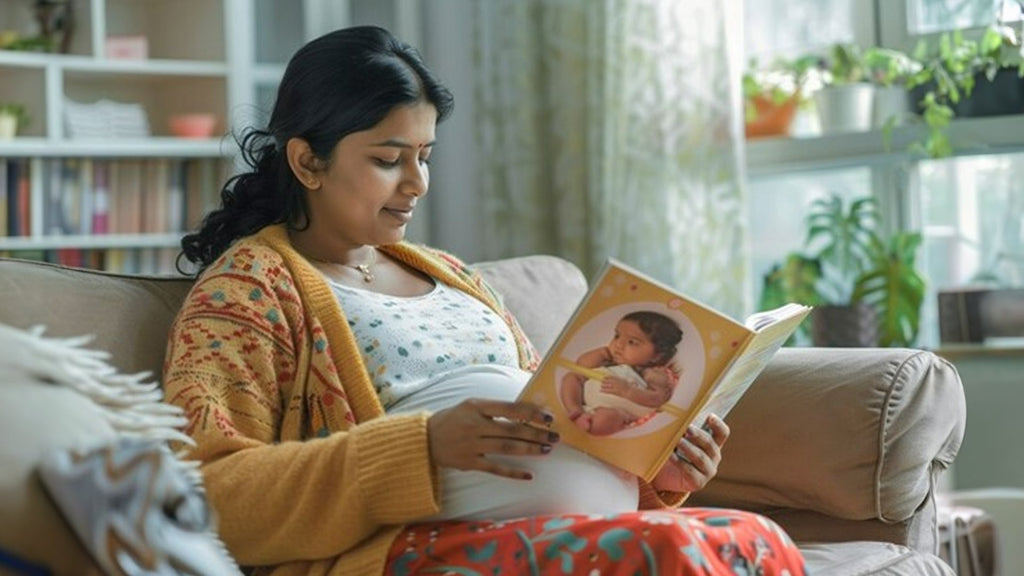
Here's why Expectant Mothers Should Adopt Garbh Sanskar P...
The journey of pregnancy brings about profound physical and emotional changes in a woman's life. As modern lifestyles become increasingly hectic, expectant mothers are seeking holistic and balanced approaches to ensure the well-being of both them and their expected children. One such ancient practice gaining renewed interest is Garbh Sanskar. Garbh Sanskar emphasizes creating a positive, nurturing environment for the mother and baby-to-be during pregnancy, drawing from ancient Indian wisdom. In this blog, we will explore why expectant mothers should adopt Garbh Sanskar practices in their modern lifestyles and how they can integrate these beneficial routines into their daily lives.
What is Garbh Sanskar?
Garbh Sanskar, which translates to "education in the womb," is based on the belief that a child's mental, emotional, and physical development begins in the womb. The practice emphasizes the importance of a positive and joyful environment for the mother during pregnancy. According to ancient Indian wisdom, the mother's thoughts, emotions, and actions can significantly influence the forthcoming child's development. Modern science supports this notion, highlighting that a baby's brain development starts in the womb and is influenced by various external factors such as the mother's health, diet, and emotional well-being.
The Importance of a Positive Environment
Creating a positive environment is at the core of Garbh Sanskar. This practice encourages expectant mothers to maintain a cheerful and stress-free mindset. Stress and anxiety during pregnancy can significantly harm both the mother and the baby, potentially leading to serious complications such as premature birth or low birth weight. By adopting Garbh Sanskar practices, expectant mothers can cultivate a calm and positive atmosphere, which can significantly enhance the baby's cognitive and emotional development.
Integrating Garbh Sanskar into Modern Lifestyles
Incorporating Garbh Sanskar into a modern lifestyle may seem challenging, but it is entirely feasible with some thoughtful adjustments. Here are some practical ways expectant mothers can adopt Garbh Sanskar practices:
1. Meditation and Yoga
Meditation and prenatal yoga are essential components of Garbh Sanskar. These practices help reduce stress, improve focus, and maintain physical fitness. Expectant mothers can start their day with a few minutes of meditation, focusing on positive affirmations and deep breathing exercises. Prenatal yoga classes, under the guidance of a certified instructor, can provide physical benefits such as improved flexibility, strength, and reduced pregnancy discomforts.
2. Healthy Diet and Nutrition
A nutritious and well-balanced diet is essential for the health of the mother and the development of the baby. Garbh Sanskar emphasizes the consumption of fresh, wholesome foods rich in essential nutrients. Maintaining a nutritious and varied diet during pregnancy is crucial for both maternal health and fetal development. Pregnant women can significantly improve their health and the health of their babies by consuming a diverse range of fruits, vegetables, whole grains, and proteins every day. Staying well-hydrated and avoiding processed foods are equally important. Consulting with a healthcare provider or a nutritionist can help create a customized dietary plan that meets the specific nutritional requirements of pregnancy.
3. Engaging with the Child in the Womb
Garbhsamvad, or baby talk, is a unique aspect of Garbh Sanskar that involves communicating with the forthcoming child. Expectant parents are encouraged to talk, sing, and read to their baby in the womb. This practice helps in establishing a strong emotional bond and can positively impact the baby's cognitive development. Reading positive and uplifting literature, reciting poems, or simply talking about the day can create a nurturing environment for the baby.
4. Listening to Soothing Music
Music significantly influences emotions and serves as an effective tool for fostering a positive atmosphere. Listening to soothing and calming music, such as classical compositions or nature sounds, can help the mother relax and reduce stress levels. Many expectant mothers find comfort in listening to spiritual or instrumental music, which can also have positive effects on the baby's development.
5. Positive Thinking and Affirmations
Maintaining a positive mindset is crucial during pregnancy. Garbh Sanskar advocates for the use of positive affirmations to foster a nurturing environment. Expectant mothers can practice daily affirmations that reinforce feelings of love, strength, and positivity. This practice not only benefits the mother's mental health but also creates a harmonious environment for the child.
6. Spiritual and Moral Development
Engaging in spiritual activities such as prayer, reading religious or inspirational texts, and attending spiritual discourses can provide emotional and moral support during pregnancy. These practices help in cultivating positive values and virtues, which can be imparted to the child in the womb. Spiritual activities can also provide a sense of peace and fulfillment, contributing to a serene pregnancy experience.
Benefits of Garbh Sanskar
The benefits of Garbh Sanskar extend beyond pregnancy, positively impacting both the mother and the child in various ways:
-
Enhanced Cognitive Development
Engaging with the awaited child through music, reading, and conversation can stimulate brain development and improve cognitive functions. -
Emotional Well-being
A stress-free and positive environment helps in maintaining the emotional well-being of both the mother and the child. -
Strong Bonding
Practices like Garbhsamvad nurture a strong emotional connection between parents and the expected baby, which can continue to flourish after birth. -
Holistic Health
A balanced diet, regular exercise, and spiritual activities contribute to the overall health and well-being of the mother. -
Positive Mindset
Affirmations and positive thinking help develop a resilient and optimistic outlook that is beneficial for both the mother and the baby.
Adopting Garbh Sanskar practices in modern lifestyles offers expectant mothers a holistic approach to ensure the well-being of themselves and their children in the womb. By incorporating practices such as meditation, eating a healthy diet, bonding with the baby, listening to calming music, and maintaining a positive mindset, expectant mothers can establish a nurturing environment that supports optimal development. As science and tradition converge, Garbh Sanskar stands out as a timeless practice that aligns with the needs of modern life, offering profound benefits for both mother and child.

5 Cute Must-Have Summer Dresses for Baby Girl
Summer is the perfect time to dress your baby girl in cute, comfortable outfits that keep her cool and stylish. With so many adorable options available online, choosing the best summer dresses for your baby girl can be overwhelming. To help you out, we've compiled a list of five must-have summer dresses for baby girls. Whether you're looking for something handmade and unique or a classic embroidered piece, these dresses will ensure your baby girl looks her best all summer.
Easy-Breezy Summer Styles for Your Baby Girl

1. Hand Crochet Baby Girl Dress

A hand crochet baby girl dress is a timeless piece that combines charm and practicality. These dresses are made from soft, breathable yarn that keeps your baby cool in hot weather while providing enough warmth for cooler evenings. The intricate patterns and delicate designs make these baby dresses stand out for any occasion, from family gatherings to casual outings.
One of the best things about hand crochet dresses is their versatility. These dresses are also available in various colours and styles, allowing you to find the perfect one for your baby.
2. Hand Crochet Ombre Dyed Baby Girl Dress

If you're looking for a dress that adds a splash of color to your baby's wardrobe, a hand crochet ombre dyed dress is an excellent choice. These dresses feature a beautiful gradient effect, where colours blend seamlessly from light to dark, creating a visually stunning piece. The ombre dyeing process is done by hand, ensuring each dress is unique and has its own character.
The combination of crochet craftsmanship and ombre dyeing makes these dresses both stylish and functional. They offer the same breathability and comfort as regular crochet dresses but with an added touch of elegance. These baby girl dresses are perfect for photo shoots, birthday parties, or any special occasion where you want your baby to stand out.
3. Hand Embroidered Bodysuit

A hand-embroidered bodysuit is another must-have for your baby girl's summer wardrobe. These baby bodysuits are not only adorable but also incredibly practical. Made from lightweight, breathable fabrics like cotton, they keep your baby comfortable in the heat while providing ample coverage.
These bodysuits often feature snap closures at the bottom, ensuring quick and easy diaper changes.
4.Hand Embroidered Gather Top with Underpants

For a stylish yet comfortable outfit, a hand-embroidered gather top with matching underpants is a fantastic option. This ensemble includes a loose-fitting top with gathered details and coordinating underpants, making it both cute and practical. The hand embroidery on the top enhances its elegance, while the gathered design ensures a comfortable fit that allows ample freedom of movement.
This outfit is ideal for active babies who love to explore and play. The loose fit keeps your baby cool and comfortable, while the matching underpants ensure a cohesive look.
5. Smocked Embroidery Baby Girl Bodysuit

Smocked embroidery baby girl bodysuits combine classic style with modern comfort. Smocking is a decorative technique that involves gathering fabric in a way that creates beautiful, stretchy patterns. This not only adds visual interest to the bodysuit but also provides a flexible, comfortable fit for your baby. The bodysuit's charming embroidery makes it a delightful addition to your baby girl's summer wardrobe.
These bodysuits are perfect for any occasion, from everyday outings to special events. The smocking allows the baby bodysuit to stretch and move with your baby, providing a snug yet comfortable fit.
Tips for Taking Care of Your Baby During Summer
Summer can be a wonderful time for both parents and babies, but the hot weather also brings certain challenges. Here are some essential tips to help you keep your baby safe, comfortable, and happy during the summer months.
Keep Your Baby Hydrated
One of the most important things during summer is to ensure your baby stays well-hydrated. Babies are more susceptible to dehydration because they have a higher body water content than adults. If you are breastfeeding, nurse more frequently to keep your baby hydrated. If your baby is formula-fed, offer additional bottle feeds. For older babies, you can also offer small sips of water throughout the day.
Dress Your Baby Appropriately
Choosing the right baby clothing is crucial for keeping your baby comfortable in the heat. Dress your baby in lightweight, breathable fabrics like cotton to promote air circulation and absorb sweat. Avoid overdressing your baby; a single layer of clothing is usually sufficient. If you're going outside, a wide-brimmed hat can help protect your baby from the sun.
Protect Your Baby from the Sun
Babies have very sensitive skin, so it's essential to protect them from direct sunlight. Use a stroller with a canopy or a sunshade and consider investing in a baby sunhat with a wide brim. For babies older than six months, apply a broad-spectrum baby sunscreen with an SPF30 to exposed skin. Be sure to reapply every two hours and after swimming or sweating.
Give Frequent Baths
You can give your baby a lukewarm bath to help them cool down and feel refreshed. You don't need to use soap every time; a simple rinse with water can be enough to lower baby's body temperature. Make sure to dry your baby thoroughly and dress them in fresh, lightweight clothes after the bath.
Dressing your baby girl for summer doesn't have to be a daunting task. With these five cute must-have dresses, you can ensure she stays cool, comfortable, and stylish all season long. Each piece offers a unique combination of practicality and beauty, making them perfect for various occasions.
Remember to consider factors such as fabric quality, comfort, and ease of maintenance when making your selections. By choosing dresses that are both stylish and functional, you can create a summer wardrobe that your baby girl will love wearing. Happy shopping!
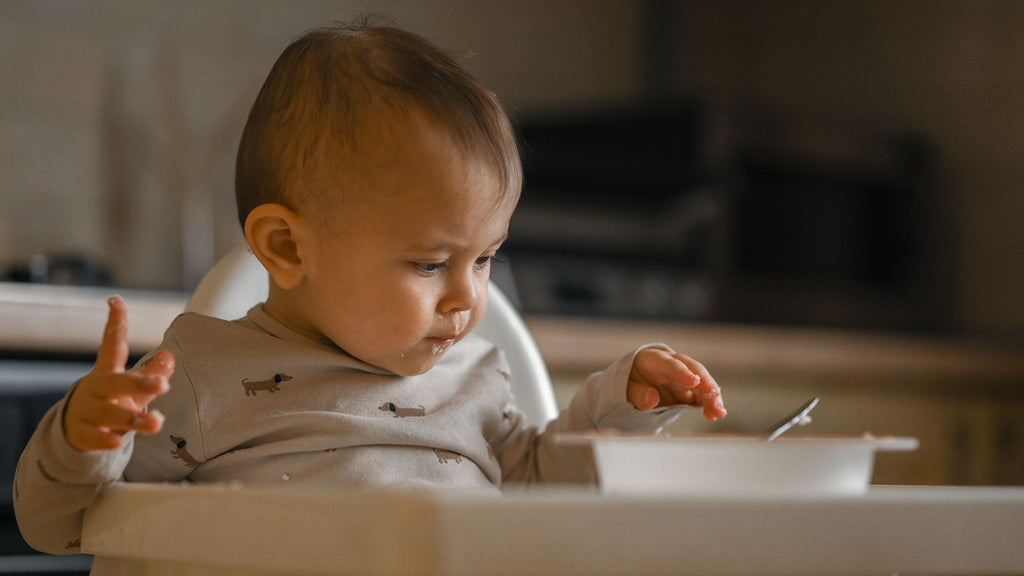
The Ultimate Baby Feeding Checklist: From Newborns to Tod...
Feeding your baby is one of the most important tasks you'll undertake as a parent. It can be most challenging, given the plethora of information and opinions out there. This comprehensive checklist will guide you from the newborn stage to toddlerhood, ensuring you have everything you need for every phase. We'll cover essential baby feeding products you will need during this period to feed your baby and provide answers to common questions parents have along the way.

Newborn Feeding Essentials (0-6 Months)
The initial six months of a baby’s life are vital for growth and development, with nutrition playing a significant role. Newborns typically feed every 2-3 hours, which means you need to be well-prepared.
-
Breastfeeding Essentials:
- A Nursing Pillow helps position your baby comfortably.
- Breast Pump is useful for expressing milk if you need to be away.
-
Nipple Cream helps soothe sore nipples.
-
Formula Feeding Essentials:
- Baby Feeding Bottle: Choose baby feeding bottles designed to reduce colic and gas. Bottles with different nipple sizes are ideal as your baby grows.
- Formula: Ensure its suitable for your baby's age and needs.
- Sterilizer: Keeps bottles and feeding equipment clean and safe.
Choosing Between Breastfeeding and Formula Feeding
Deciding how to feed your baby is a personal choice influenced by various factors such as health, lifestyle, and comfort. Here are some points you can consider before choosing one:
-
Breastfeeding
- It provides optimal nutrition and antibodies.
- It promotes bonding between mother and baby.
- It can be challenging initially but becomes easier with time.
-
Formula Feeding
- It offers flexibility, allowing others to feed the baby.
- It makes it easier to track the baby's intake.
- Requires preparation and cleanliness to ensure safety.
Transitioning to Solids (Around 6 Months)
Most babies start transitioning to solid foods around six months. This phase is exciting as it introduces your baby to new tastes and textures.
Signs Your Baby is Ready for Solids
Not all babies are ready for solids at precisely six months. Look for these signs:
- Sits up with minimal support.
- Shows interest in food, perhaps by reaching for it.
- They can move food to the back of their mouth and swallow.
Expanding the Palette (9-12 Months)
As your baby approaches their first year, their diet will begin to resemble that of a toddler. You can start introducing a wider variety of foods:
- Fruits and Vegetables: Soft-cooked or mashed fruits like bananas and papayas and vegetables like carrots and potatoes.
- Proteins: Small pieces of well-cooked chicken, fish, mashed lentils (dal), and beans.
- Grains: Small pieces of roti, soft-cooked rice, or tiny servings of idli or dosa.
Introducing Textures and Managing Mess
Around this age, babies are learning to handle different textures and self-feed. This can be messy but is an important part of a baby's development.
- Baby Bamboo Feeding Bowl and Plate: These are great for introducing solids. A feeding bowl and a bamboo feeding plate will be long-lasting, simple to clean, and environmentally friendly.
- Bib and Splash Mat: To help manage the mess during feeding time.
- Baby Spoons: Designed for small hands and mouths.
Toddler Feeding (12 Months+)
By the time your baby reaches their first birthday, they will be enjoying a variety of foods and participating in family meals. This stage is about encouraging healthy eating habits and ensuring a balanced diet.
Encouraging Healthy Eating Habits
- Routine: Establish regular meal and snack times.
- Variety: Offer different foods to ensure a balanced diet.
- Modelling: Eat healthy foods yourself, as toddlers often imitate adults.
- Patience: It may take several attempts before a toddler accepts new foods.
Additional Considerations
Feeding your baby isn't just about nutrition; it's also about creating a positive experience around food.
-
Allergies
Introduce common allergens like peanuts and eggs one at a time and watch for any reactions. -
Hydration
Make sure your baby is staying well-hydrated, particularly as they become more active. -
Supplements
Consult your paediatrician about any necessary supplements, like vitamin D, for breastfed babies.
Conclusion
Feeding your baby from newborn to toddlerhood is a journey filled with learning and adaptation. Keep in mind that every baby is unique, so be adaptable and patient as you navigate this exciting journey.
This ultimate baby feeding checklist is designed to help you through each stage, making the process smoother and more enjoyable for both you and your baby. Happy feeding!
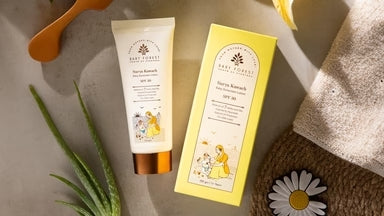
Here’s everything you need to know about Sun Protection F...
Babies are the happiness factor in a family when it comes to the family HQ (Family Happiness Quotient). With Summer at its peak, all parents must make sure that their baby must be sun protective at all times of the day. With so many options of sunscreens available in the market these days, it becomes a task to choose the best one for your little one. In this article, we get straight to the point and provide you with a well-elaborated overview of sunscreen usage for babies and all-around advantages for one’s health.
"Better a sun-kissed than sunburned!" This proverb has more relevance to baby skincare than anything else. Choosing the right baby sunscreen or sunblock, among other things, is an important step in the direction of security concerning the scorching summer heat & UV rays. Parents should look for more natural ingredients than chemicals when it comes to choosing the right sunscreen for their little ones.
Reading labels & making informed choices should be the goal of every parent before applying anything to their baby’s skin. The key requirement is a thorough understanding of the ingredients in the sunscreen and how they are aligned with the specifications for your baby’s skin. Alongside applying sunscreen, one must also ensure the baby is protected with a physical layer of clothing.
There is a very fine line between protecting the skin and protecting the skin with comfort. Organic cotton clothing ensures that the skin area is aerated to avoid overheating. Studies suggest that when using Sunscreen, one must dress the little ones in breathable clothing.
Understanding the concept of UV rays
The UV rays on earth are majorly of two types UVA & UVB rays. While UVA reaches the earth at about 95%, UVB reaches the rest at 5%. As mentioned, Sunlight is good for the baby, one must make sure that the baby is exposed to the morning sunlight only for a reason (The morning UV rays are UVB(generally good for the skin). UVB rays delay tanning & don’t age skin cells. When it comes to the Sun Protection for babies, there is science involved. At birth, the babies are born with a lesser amount of Melanin in their skin, with development in the next 6 months.
SPF (Sun Protection Factor) ranked on the seal is also a vital element to bear in mind. Babies & kids need SPFs of 15 to 30. Therefore, doctors and dermatologists commonly recommend it. A mild range could have provided ample protection without being too harsh on the baby's skin. Parents need to understand that, SPF is not a factor in being protective from sun rays, rather SPF rating denotes protection from UVB rays. Higher SPF doesn’t mean better protection, rather, is directly proportional to the duration of sun protection. Applying and reapplying sunscreen isn't enough, even SPF can only show its real effectiveness in sun exposure combined with other factors.
Specialists believe that having sunscreen should take at least 15 to 30 minutes before one dives into the sun. This makes sure that the sunscreen is absorbed completely by the skin and that all its protective factors can be utilized completely. The most important thing is reapplication of SPF every 2 hours to stay above that optimal protection where the exposure time is extended by the sun.
But while we talk about the application of sunscreen, it is always recommended to do a patch test on your baby as recommended by the FDA, as their skin is delicate and sensitive & might get affected by any ingredient of the product. As mentioned, higher SPF doesn't necessarily mean better protection against the sun despite the myths around the number. SPF 15 blocks out about 93% of UVB radiation, while SPF 30 offers 97% protection. If you use an SPF rating of 50 and above there is not significant protection increase.
As per reports, it is always recommended to use natural ingredients like Sea Buckthorn, Cocoa Butter, & Daffodil that not only protect the baby’s skin but also hydrate & enrich their skin as well. These elements don't just make the products effective but also help to support the baby`s skin's overall health and well-being at the same time.
In conclusion, the need to apply sunscreen to babies should be stressed tremendously. Sunscreen offers much more than UV protection to the skin of a baby. It guards against sunburn and shields from long-term harm to the skin, making it mother's primary skincare partner. Sustaining the experts' recommendations and acknowledging the parents to be alert will ensure that the infants' delicate skin soaks in the sun's rays under the protective covering on the right note, by no means affecting the little one's skin health.
Related Read - The Importance of Sun Protection: Why Baby Sunscreen is a Must
Related Blog - Top Summer Baby Care Essentials for Your Little One
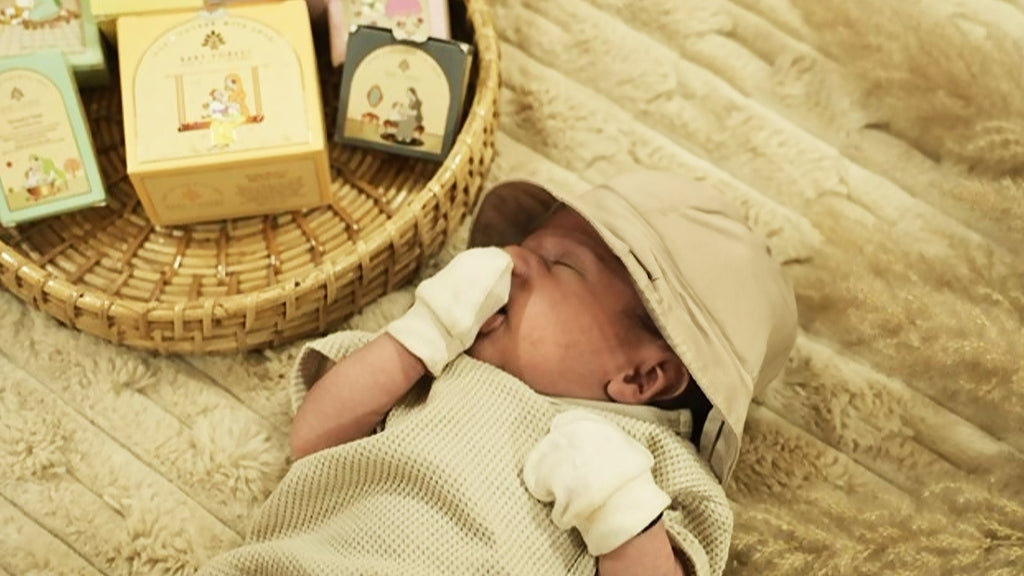
How to Dress Your Baby for a Comfortable Sleep
Parents are always concerned about their newborn's well-being, and ensuring their baby gets a comfortable night's sleep is one of the top priorities. Proper baby clothing plays a significant role in this. Here's a comprehensive guide on how to dress your baby for a restful night's sleep.
Understanding Your Baby's Sleep Environment
Before diving into some baby clothing options, it's crucial to understand the sleep environment, as it directly impacts on how you should dress your baby to sleep.
Room Temperature:
The ideal room temperature for a baby's sleep is between 68-72°F (20-22°C). This range helps ensure your baby is comfortable without overheating or getting too cold. Using a room thermometer can help you maintain this ideal temperature.
Bedding:
The American Academy of Pediatrics (AAP) advises against using loose blankets, pillows, or stuffed animals in your baby's crib as they pose suffocation and strangulation risks. Instead, opt for fitted sheets and sleep sacks or wearable blankets.
Safe Sleep Practices:
- It is advised to always lay babies on their backs when sleeping to lower the risk of Sudden Infant Death Syndrome (SIDS).
- Ensure the crib mattress is firm and covered with a tightly fitted sheet.
- Keep the crib free from any soft items, including crib bumpers.
Choosing the Right Baby Sleepwear
Dressing your baby appropriately for sleep involves selecting the right type of baby clothing based on the season and room temperature. Let's explore some popular options and when to use them.
Swaddling
Swaddling is the practice of snugly wrapping your baby in a swaddle blanket, creating a cosy atmosphere that helps them feel safe and sleep better.
Benefits of Swaddling:
-
Reduces Startle Reflex:
Swaddling helps suppress the Moro reflex or startle reflex, which can wake your baby up. -
Promotes Sleep:
The snug feeling help babies feel more secure and calm, promoting better sleep. -
Safety:
Proper swaddling can prevent your baby from rolling onto its stomach, a position linked to SIDS.
How to Swaddle?

- Lay the Swaddle Flat: Spread the baby swaddle out flat, with one corner folded down.
- Place Your Baby: Lay your baby on their back with their shoulders below the folded corner.
- Wrap One Side: Bring one side of the swaddle over your baby's body, tucking it under their back on the opposite side.
- Fold the Bottom: Lift the bottom of the swaddle to cover your baby's feet.
- Wrap the Other Side: Bring the other side of the swaddle across your baby's body, tucking it under their back on the opposite side.
Related Read - The Essential Guide to Perfect Swaddling: Techniques and Tips for New Parents
Full-Sleeve Bodysuits
Full-sleeve bodysuits, also known as sleepers or onesies, are excellent for keeping your baby warm without the need for additional blankets.
Features to Look For:- Breathable Fabrics: Cotton is an excellent option because it is soft, breathable, and gentle on your baby's skin. Organic cotton is even better, as it is free from harmful chemicals.
- Snap or Zip Closures: These make diaper changes easy during the night.
- Footed Options: Footed sleepers keep your baby's feet warm, eliminating the need for socks, which can come off during sleep.
When to Use:
- Full-sleeve bodysuits are ideal for cooler nights or air-conditioned rooms. They provide full coverage, ensuring your baby stays warm throughout the night.
Sleep Sacks and Wearable Blankets
Sleep sacks are wearable blankets that reduce the risk of suffocation associated with loose blankets while providing warmth.
Types of Sleep Sacks:
-
Lightweight Sleep Sacks:
Made from cotton or muslin, these are ideal for warmer nights. -
Fleece or Quilted Sleep Sacks:
These are suitable for cooler temperatures and provide extra warmth.
How to Choose:
- Select a sleep sack based on the room temperature and your baby's age. Ensure it fits snugly around the neck and armholes but is roomy enough for leg movement. Avoid sleep sacks with hoods to prevent overheating.
Dressing for Different Seasons
The season significantly influences how you should dress your baby for sleep. Let's break it down by season.
Summer
During hot weather, it's important to keep your baby cool to prevent overheating.
Recommended Clothing:
-
Short-Sleeve Bodysuits or Rompers:
The rompers provide coverage while allowing better airflow. -
Lightweight Sleep Sacks:
Made from breathable materials like cotton or muslin, they keep your baby comfortable without overheating. -
Just a Diaper:
On particularly hot nights, dressing your baby in just a diaper and a light swaddle or sleep sack may be sufficient.
Tips:
- Ventilation: Keep the room well-ventilated. Use a fan to circulate air, but do not point it directly at the baby.
- Hydration: Ensure your baby is well-hydrated, especially if they are breastfeeding.
Related Read - 5 Best Summer Clothing for Baby Boys
Winter
In colder weather, layering is key to keeping your baby warm.
Recommended Clothing:
-
Full-Sleeve Bodysuits with Footed Bottoms:
These provide full coverage and keep your baby's body and feet warm. -
Fleece Sleep Sacks:
They offer additional warmth compared to cotton sleep sacks and are perfect for cold nights.
Signs Your Baby is Comfortable
To make sure your baby is neither too hot nor too cold, watch for these signs:
Comfortable Temperature:
-
Warm to Touch:
Your baby should feel warm but not sweaty. -
Calm and Sleeping Soundly:
A comfortable baby will typically sleep well and appear calm.
How to know if the baby is feeling too hot:
-
Sweating or Damp Hair:
Check for dampness on the back of the neck. -
Flushed Cheeks:
Overheating can cause a flushed appearance on the face.
How to check if the temperature is too cold for the baby:
-
Cold Hands and Feet:
It's normal for a baby's extremities to be slightly cooler, but they shouldn't be cold to the touch. -
Shivering or Restlessness:
If your baby is shivering or seems unusually fussy, it might be too cold.
Additional Tips for a Comfortable Night's Sleep
Monitor Room Temperature:
Use a room thermometer to keep the nursery at the recommended temperature. Adjust clothing as needed to maintain comfort.
Layer Wisely:
It's better to use several light layers that can be added or removed rather than one heavy layer.
Quality Fabrics:
Opt for natural, breathable fabrics like organic cotton or bamboo. It is advisable to avoid using synthetic materials as they tend to trap heat, which may cause overheating.
Regular Checks:
Periodically check your baby's temperature by feeling their chest or back, as hands and feet can be misleading.
Dressing your baby for a comfortable night's sleep is about finding the right balance between warmth and breathability. Pay attention to the room temperature, choose appropriate clothing, and monitor your baby's comfort throughout the night. By doing so, you'll help ensure that both you and your baby enjoy a restful and safe night's sleep.

The Importance of Choosing the Right Teether for Your Bab...
Teething marks one of the most exciting yet challenging milestones in a baby’s early development. The teething typically begins around six months of age; however, it can start anytime between three and twelve months.
During this stage, babies may experience sore gums and discomfort. So choosing the right baby teether can help soothe their gums and provide much-needed relief, making the teething journey easier for both babies and parents..
However, not all teethers are created equal. Choosing a suitable teether is crucial for a baby's comfort, safety, and overall oral health. Parents who want safe, gentle options for their little ones can trust natural rubber baby teethers for comfort and care. These teethers not only help ease teething pain but also support healthy oral and sensory development. This article explores why choosing the right baby teether matters and what key factors parents should consider before making a decision.
What is Teething?
Teething occurs when a baby’s first teeth start pushing through the gumline, marking an important stage in their early growth and development. The first teeth to emerge are usually the bottom front teeth (lower central incisors). The top front teeth typically follow about 4–8 weeks later. During this period, the baby might show signs of discomfort, such as drooling more than usual, being fussier, or trying to bite and chew on things.
At this stage, a safe, soft teether can make a remarkable difference. The best natural rubber teethers are designed to reach both front gums and back molars, providing comfort throughout every teething phase.
*Incisors: These are one of the eight sharp teeth at the front of the mouth that are used for biting
Why Choosing the Right Baby Teether Matters?
A thoughtfully chosen teether can do much more than soothe sore gums. It offers a safe outlet for babies to bite and chew, helping reduce discomfort as new teeth emerge. The pressure helps reduce discomfort as the new teeth push through the gums. Additionally, chewing on teethers can also assist in strengthening the new teeth, massaging the gums, and even improving motor skills as the baby learns to manoeuvre the teether to their mouth.
Material safety is the top priority when choosing a baby teether. Non-toxic, BPA-free options made from natural rubber or food-grade silicone ensure the baby stays protected from harmful substances. However, it’s important to note that some products marked “BPA-free” can still contain traces of BPA or other chemicals, so careful research and label checking are essential before purchase.
Beyond comfort, the right teether encourages healthy oral development, introduces different textures to stimulate sensory growth, and offers reassurance during an otherwise uncomfortable stage.
How to Know When a Baby Needs a Teether
Introducing a teether at the right time can help ease a baby’s discomfort during the teething phase. Parents can consider offering one when the baby begins putting hands in the mouth or chewing on fingers—clear signs that gum irritation has started. Teething often begins around three months of age, as babies explore their surroundings through touch and taste, though the exact timing can differ from one baby to another.
Here are a few clear signs that your baby might be ready to use a best baby teether:
-
Chewing more frequently on toys, fingers, or nearby objects
-
Drooling more than usual
-
Becoming unusually fussy or irritable without a clear reason
-
Gums appearing red, swollen, or tender where new teeth are coming in
-
Trouble sleeping or waking up more often at night
-
Reduced appetite during teething phases
-
Rubbing cheeks or tugging at ears because of gum discomfort
When these signs appear, offering a safe teether can bring quick comfort, and prevent babies from chewing on unsafe household objects.
Factors to Consider When Choosing a Baby Teether
-
Material Safety
The foremost consideration is the safety of the material. Always look for teethers made of non-toxic, BPA-free materials. Common safe materials include silicone, rubber, and organic cotton. Each material offers different textures and firmness, so parents might want to try a few to see which one the baby prefers. -
Texture and Hardness
The texture should be firm enough to provide necessary pressure against the gums but not so hard that it could hurt the baby's tender gums. Many baby teething products come in various textures, which can be more soothing and engaging for the baby. -
Size and Shape
The teether for a baby should be large enough so that there is no risk of choking, but easy for small hands to hold and manipulate. Many teethers come in shapes that babies can easily grip, like rings or characters. Also, ensure it can reach all the areas in the mouth where teeth are developing. -
Ease of Cleaning
Hygiene is critical when it comes to anything in the baby's mouth. When selecting teethers, choose ones that can be easily cleaned with soap and water or are dishwasher-safe to ensure they remain germ-free. -
Cooling Feature
Some baby teether toys can be cooled in the refrigerator, providing extra soothing qualities. The cold can help numb the gums and reduce inflammation. However, avoid freezing teethers, as extreme cold can be harmful.

Tips for Safe Usage
-
It is important to check the teether on a regular basis for any signs of damage or wear. This will help ensure that it is safe for use and prevent any potential harm to the baby. Immediately discard if any parts pose a choking hazard.
-
It is important to supervise the baby while using a teether to prevent choking hazards and ensure safety.
-
Keep teethers clean and dry when not in use.
Primarily, avoid:
-
Liquid-filled teethers that could leak or break during chewing
-
Teethers with small decorative pieces that might become choking hazards
-
Teething gels or medicines containing benzocaine or lidocaine
-
Teething necklaces, bracelets, or anklets that can pose strangulation or choking risks
Conclusion
Teething is one of the first major challenges parents face as their baby grows. Finding the right teething products becomes essential, as they help soothe sore gums and provide much-needed comfort to the baby. A safe, high-quality baby teether isn’t just a toy; it’s a comforting companion during one of the first big challenges of infancy. Every baby is different, so finding the perfect teether may take a little trial and patience. But once parents discover what works best, it makes the teething journey calmer for both the baby and the family.
With the right teether and plenty of care and cuddles, teething becomes just another gentle step in growing up. Happy teething!



